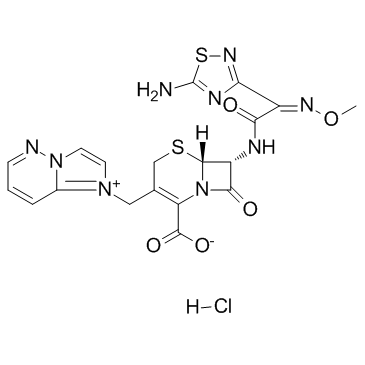Microbiology & Virology
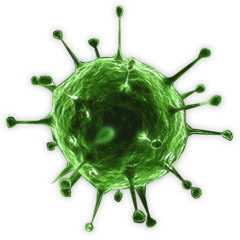
Microbiology & Virology
A virus is a small infectious agent that replicates inside living cells. Viruses cause many human diseases from small illnesses, like influenza, to more deadly diseases, like hepatitis B and HIV. Our body’s immune system defends against viral infection by generating specific antibodies to bind to and neutralize viral particles and by cell mediated immunity that destroys infected host cells.
Targets for Microbiology & Virology
- Antibiotic(531)
- Bacterial lipoprotein targeting chaperone(1)
- CCR5(3)
- CMV(24)
- gp120/CD4(7)
- HBV(78)
- HCV(170)
- HIV(453)
- HSV(86)
- Influenza virus(139)
- NA(11)
- Reverse Transcriptase(67)
- RSV(38)
- SRPK(5)
- SARS-CoV(134)
- Antifungal(34)
- Orthopoxvirus(2)
- Antimalaria(10)
- Beta-Lactamase(0)
- VEEV(1)
- Arenavirus(10)
- Bacterial(1301)
- Enterovirus(21)
- Filovirus(5)
- Fungal(335)
- Parasite(387)
- Virus Protease(73)
- Chicken Pox & Shingles(0)
- Chikungunya(0)
- Coronaviruses(9)
- Dengue(2)
- DNA & RNA Polymerase Inhibitors(4)
- Ebola(0)
- Entry/Fusion Inhibitors(6)
- Epstein-Barr(0)
- Integrase Inhibitors(2)
- MERS(6)
- Others(0)
- Rhinoviruses(1)
- West Nile Virus(0)
- Yellow Fever(1)
- Zika(0)
- COVID-19(16)
- Antiviral(2)
Products for Microbiology & Virology
- Cat.No. Product Name Information
-
GC43031
C16 Galactosylceramide (d18:1/16:0)
C16 Galactosylceramide is a glycosphingolipid that contains a galactose moiety attached to a ceramide acylated with palmitic acid .

-
GC68449
CA inhibitor 1

-
GC66051
Cabotegravir sodium
Cabotegravir (GSK-1265744) sodium is a orally active and long-acting HIV integrase inhibitor and organic anion transporter 1/3 (OAT1/OAT3) inhibitor with IC50 values of 2.5 nM, 0.41 μM and 0.81 μM for HIVADA, OAT3 and OAT1, respectively. Cabotegravir sodium is primarily metabolized by uridine diphosphate glucuronosyltransferase (UGT) 1A1, with low potential to interact with other antiretroviral drugs (ARVs). Cabotegravir sodium can be used to research AIDS.

-
GC19085
Cadazolid
Cadazolid (ACT-179811) is a new oxazolidinone antibiotic with potent activity against Clostridium difficile.
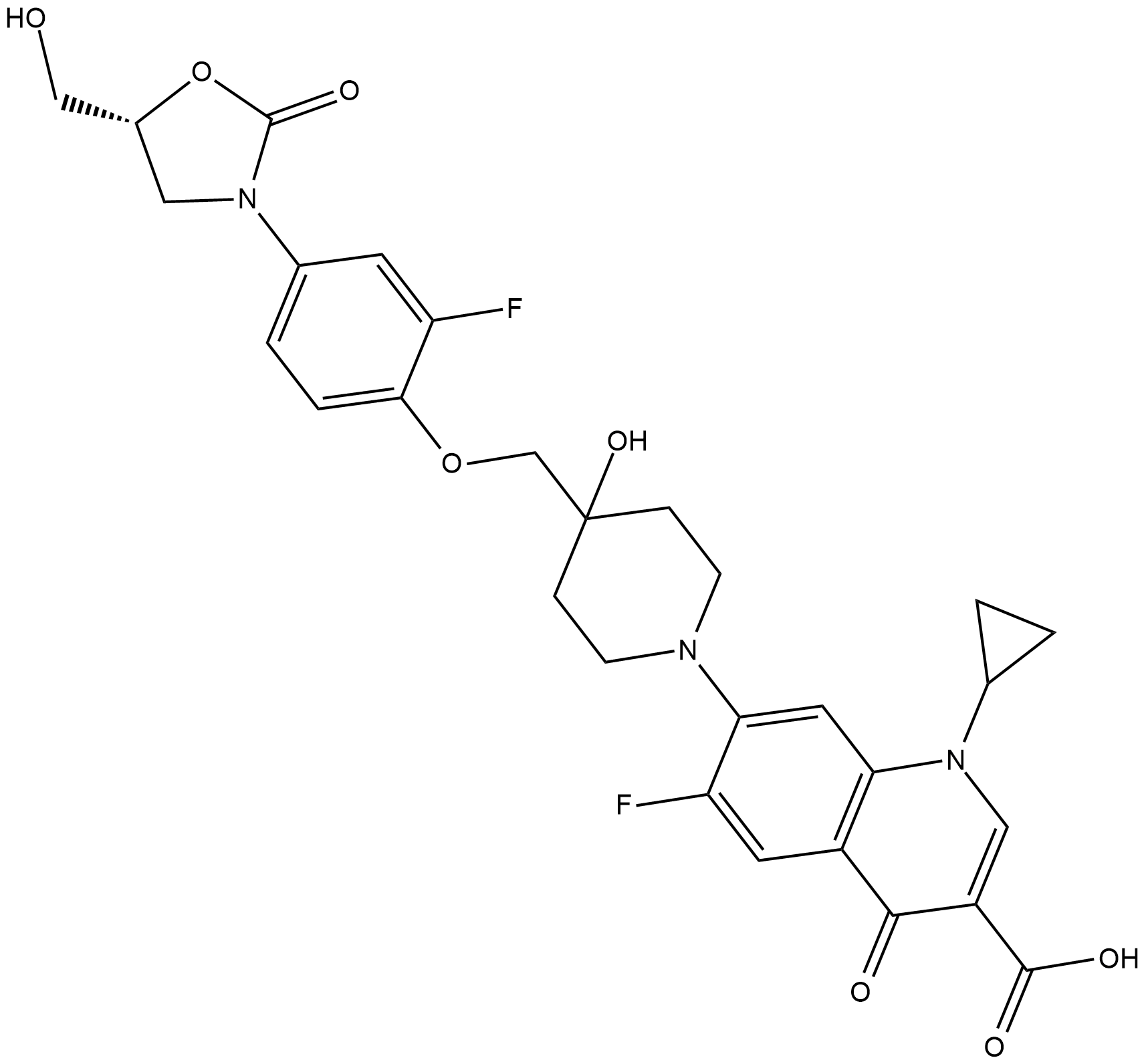
-
GC64102
Cadrofloxacin
Cadrofloxacin (Caderofloxacin; CS-940), a orally active fluoroquinolone, is effective against aerobic/anaerobic Gram-positive and Gram-negative bacteria.
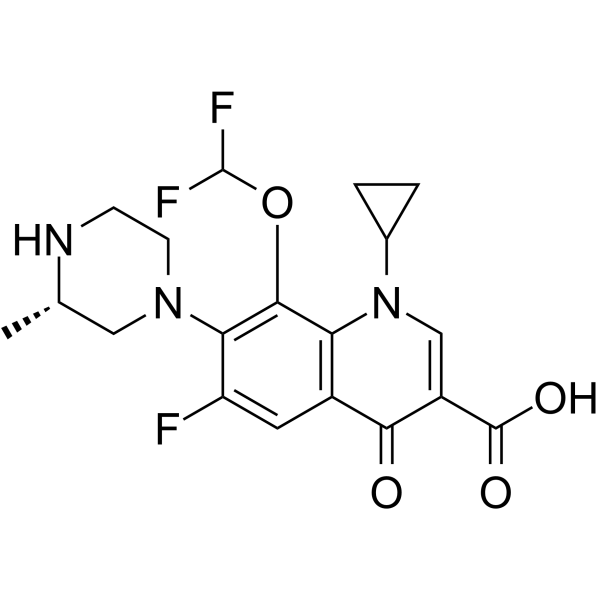
-
GC30960
Caerulomycin A (Cerulomycin)
Caerulomycin A (Cerulomycin) (Cerulomycin; Caerulomycin), an antifungal compound, induces generation of T cells, enhances TGF-β-Smad3 protein signaling via suppressing interferon-γ-induced STAT1 signaling.
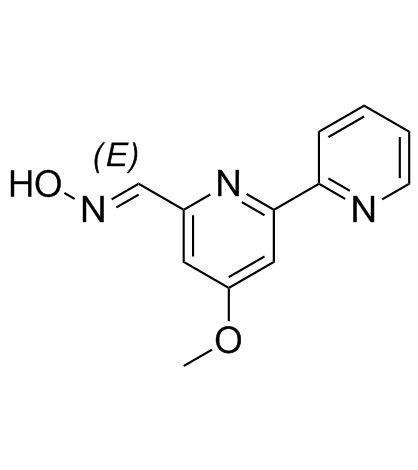
-
GC40490
Caffeic Acid methyl ester
Caffeic Acid methyl ester, an antimicrobial agent, shows moderate antimicrobial and prominent antimycobacterial activities.
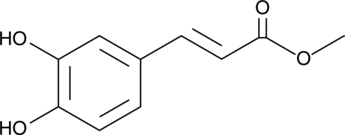
-
GC60668
Calcimycin hemimagnesium
Calcimycin (A-23187) hemimagnesium is an antibiotic and a unique divalent cation ionophore (like calcium and magnesium).
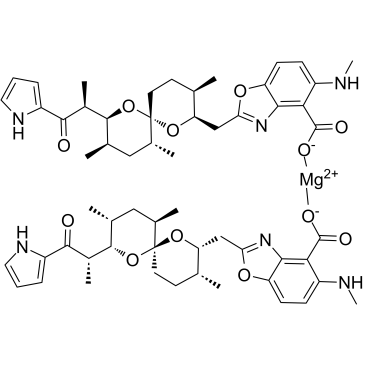
-
GC18922
Camalexin
Camalexin is an alkaloid released by plants of the Brassicaceae family in response to pathogen infection.
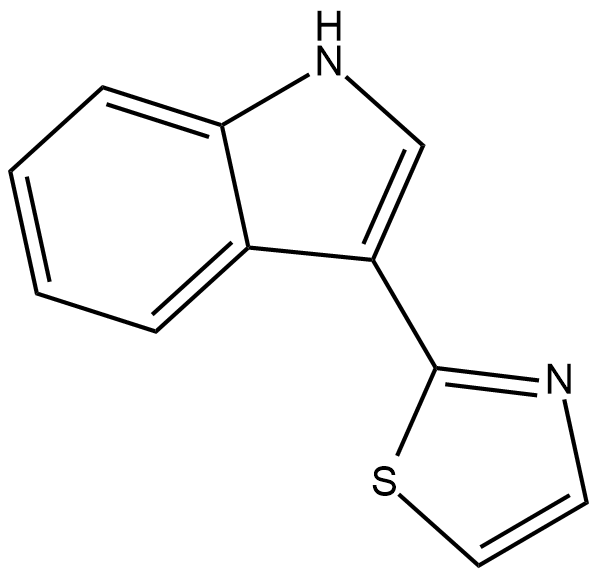
-
GC31953
Camphor ((±)-Camphor)
Camphor ((±)-Camphor) ((±)-Camphor ((±)-Camphor)) is a topical anti-infective and anti-pruritic and internally as a stimulant and carminative.
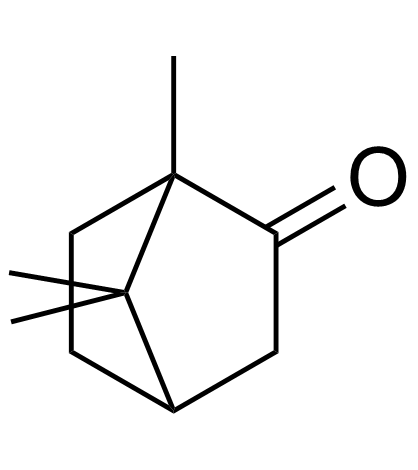
-
GC43138
CAP 3
CAP 3 is a cholic acid-peptide conjugate (CAP) with antibacterial activity.
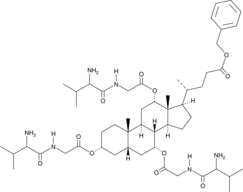
-
GC16198
Capreomycin Sulfate
Cyclic peptide antibiotic
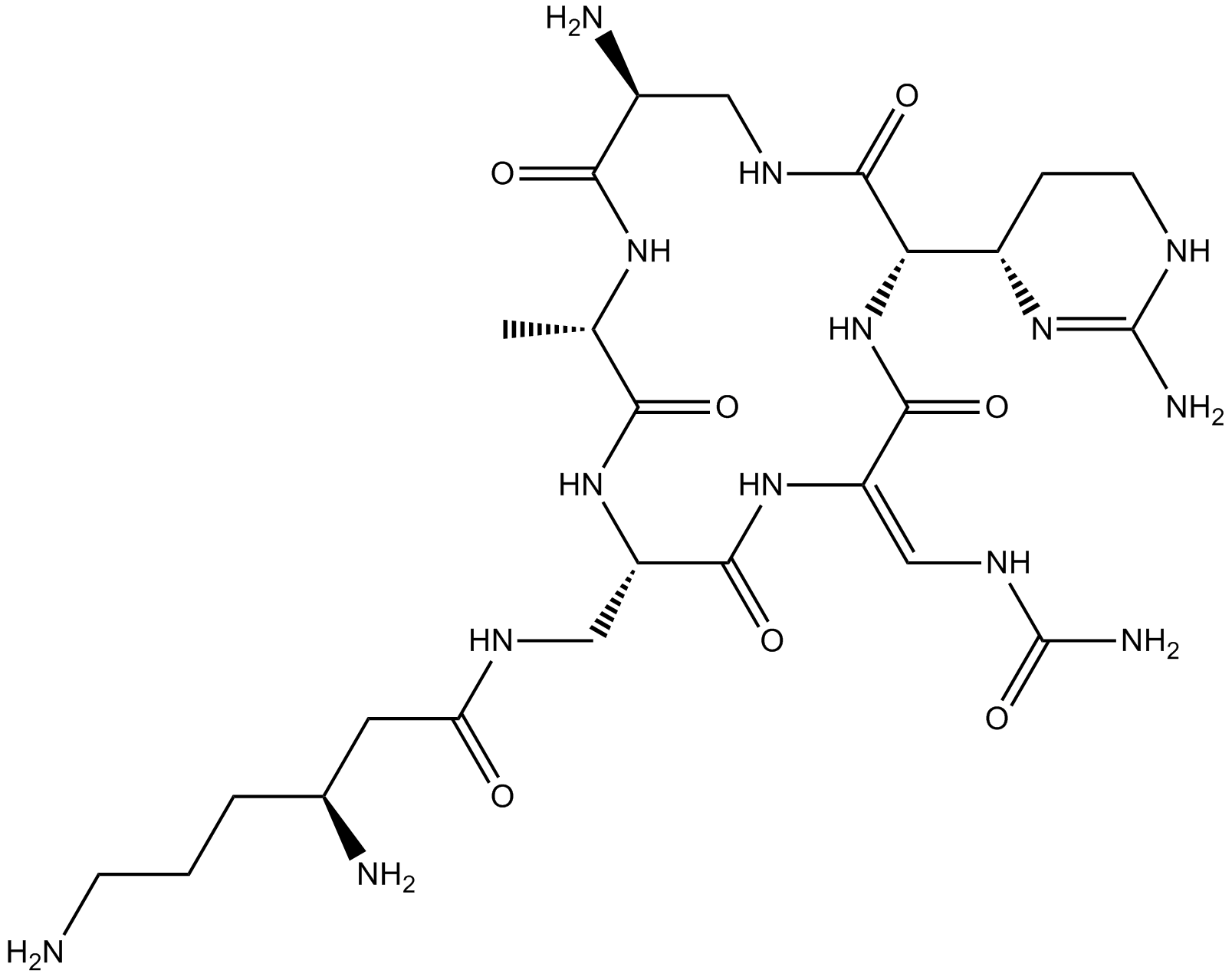
-
GC47035
Captan
A fungicide
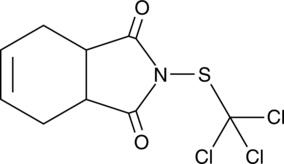
-
GC35604
Carabrone
Carabrone is isolated from the fruits of Carpesium abrotanoides , is a well-known sesquiterpene and exhibits significant anti-bacterial and anti-tumor activities.
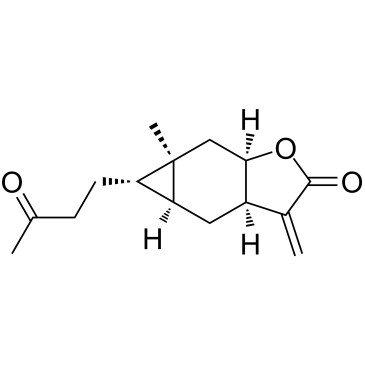
-
GC38896
Caracemide
Caracemide (NSC-253272) inhibits the enzyme ribonucleotide reductase of Escherichia coli.
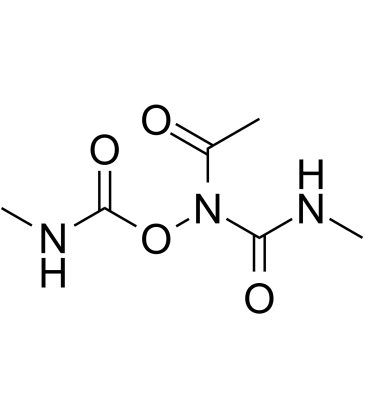
-
GC16295
Carbadox
antibiotic
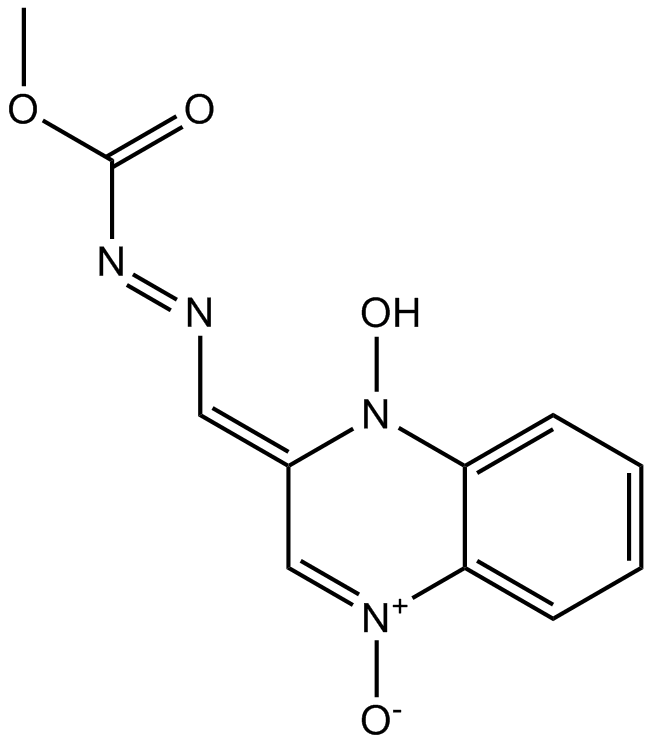
-
GC32147
Carbendazim
Carbendazim is a potent and orally active broad-spectrum?benzimidazole fungicide and can be acts as a pesticide for fungal diseases research, such as Seproria,?Fusarium?and?Sclerotina.
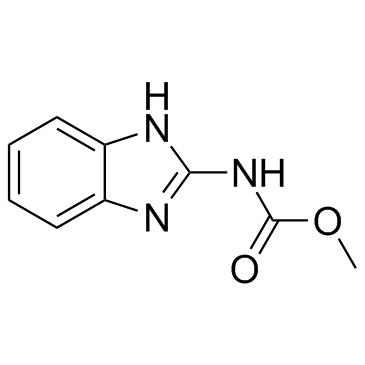
-
GC16053
Carbenicillin
semi-synthetic penicillin antibiotic
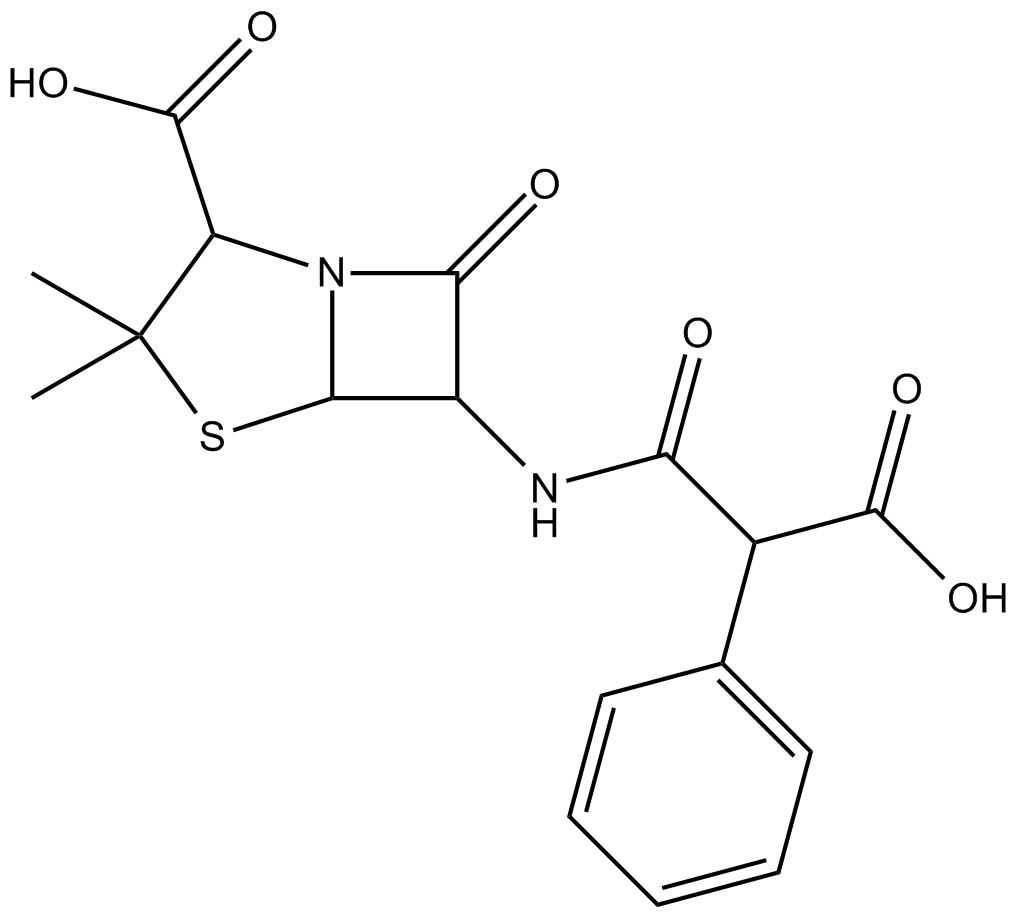
-
GC17633
Carbenicillin, Disodium Salt
A carboxypenicillin antibiotic
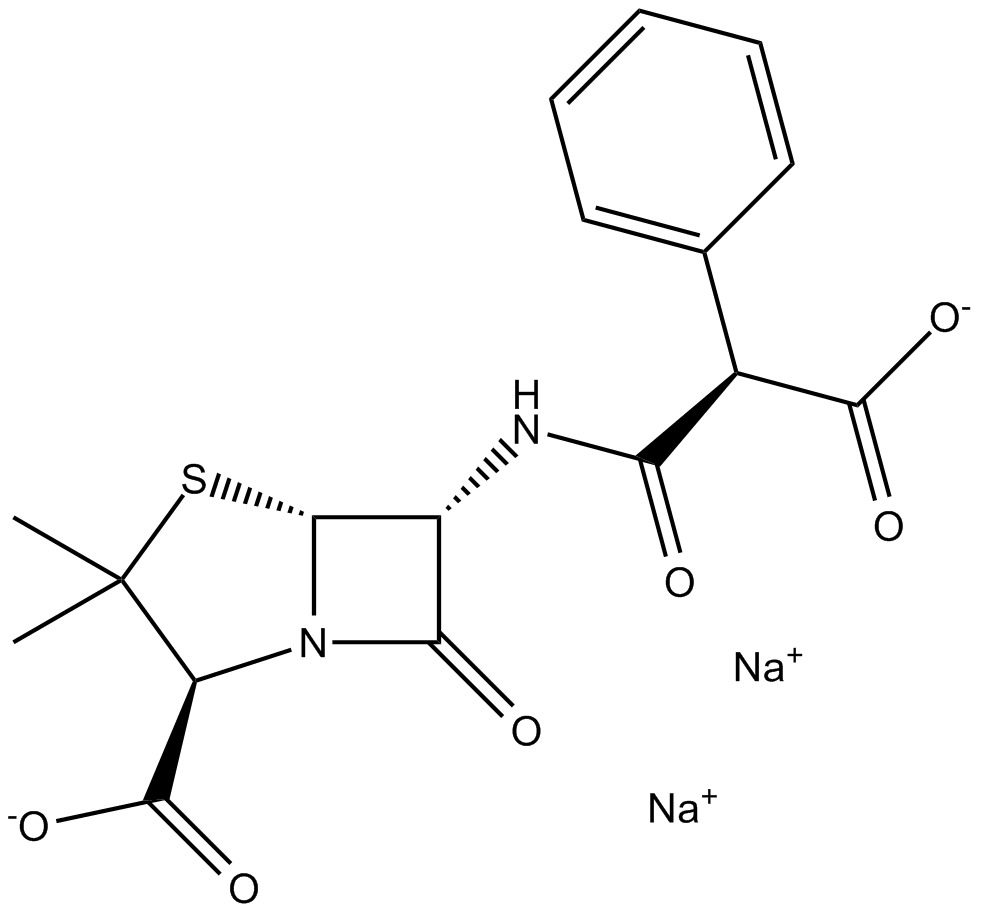
-
GC60099
Carbocisteine
Carbocisteine, a mucolytic agent, can be used for the research of chronic obstructive pulmonary disease (COPD).
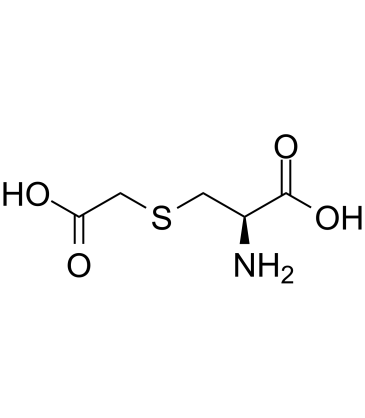
-
GC35606
Carbodine
Carbodine (Carbocyclic cytidine) is a broad-spectrum antiviral agent active against DNA viruses, (+)RNA viruses, (-)RNA viruses, paramyxo, rhabdo and (+/-)RNA viruses, targets CTP synthetase that converts UTP to CTP.
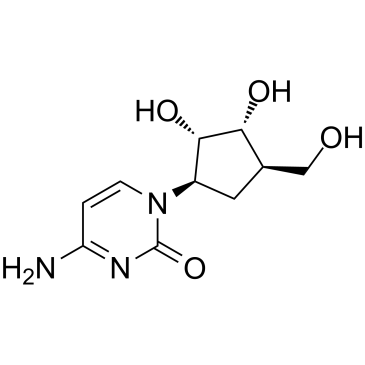
-
GC32257
Carbosulfan
Carbosulfan inhibited relatively potently CYP3A4 and moderately CYP1A1/2 and CYP2C19 in pooled HLM (human livers).
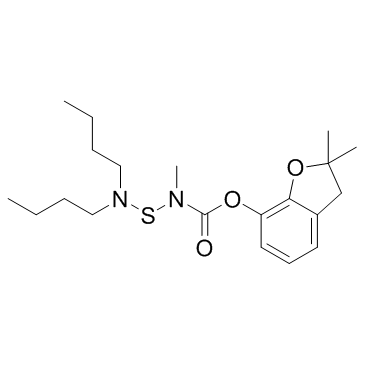
-
GC32331
Carboxin (Carboxine)
Carboxin (Carboxine) (Carboxin (Carboxine)e) is a systemic agricultural fungicide and seed protectant.
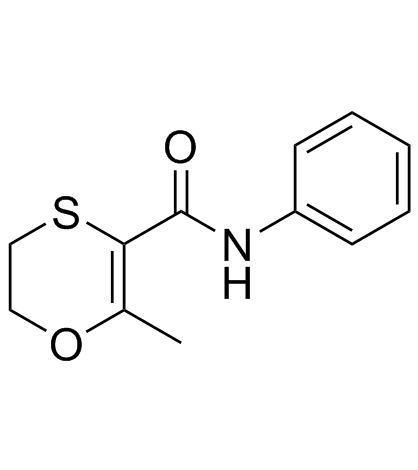
-
GC15089
Carfilzomib (PR-171)
A proteasome inhibitor
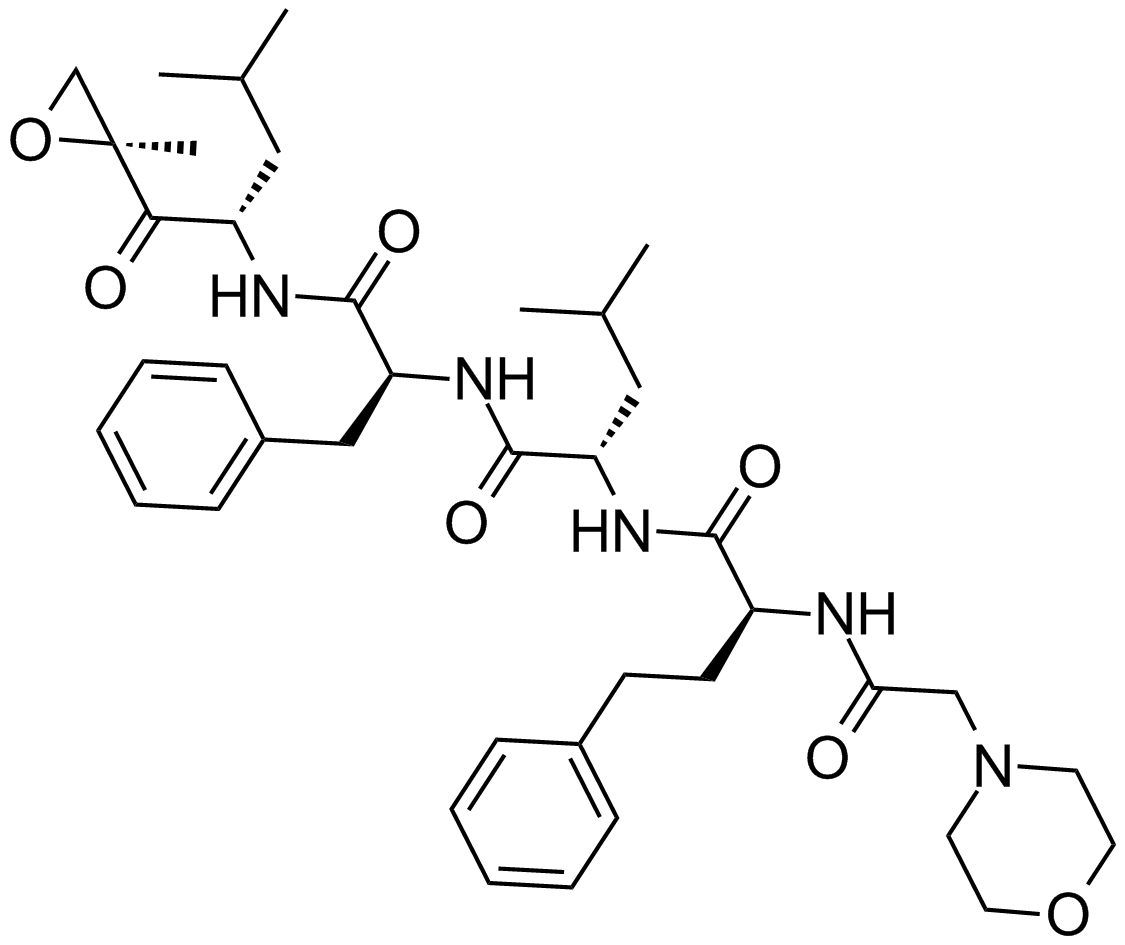
-
GC63565
Carindacillin sodium
Carindacillin (Carbenicillin indanyl) sodium is an orally active and broad-spectrum antimicrobial agent.
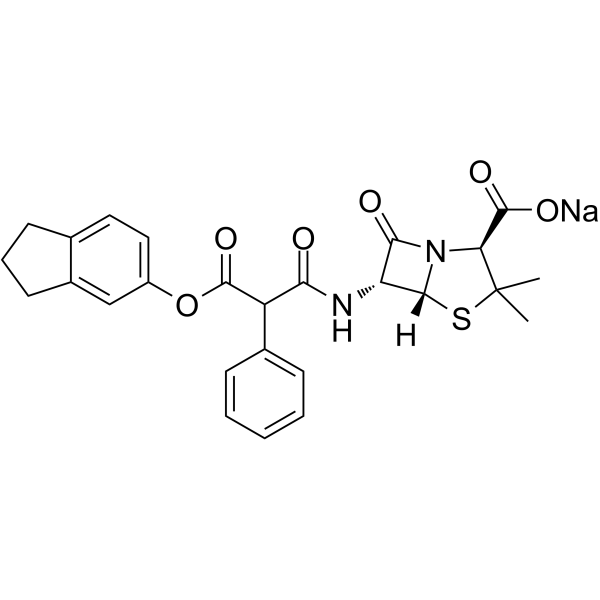
-
GC14964
Carminomycin
antitumor antibiotic
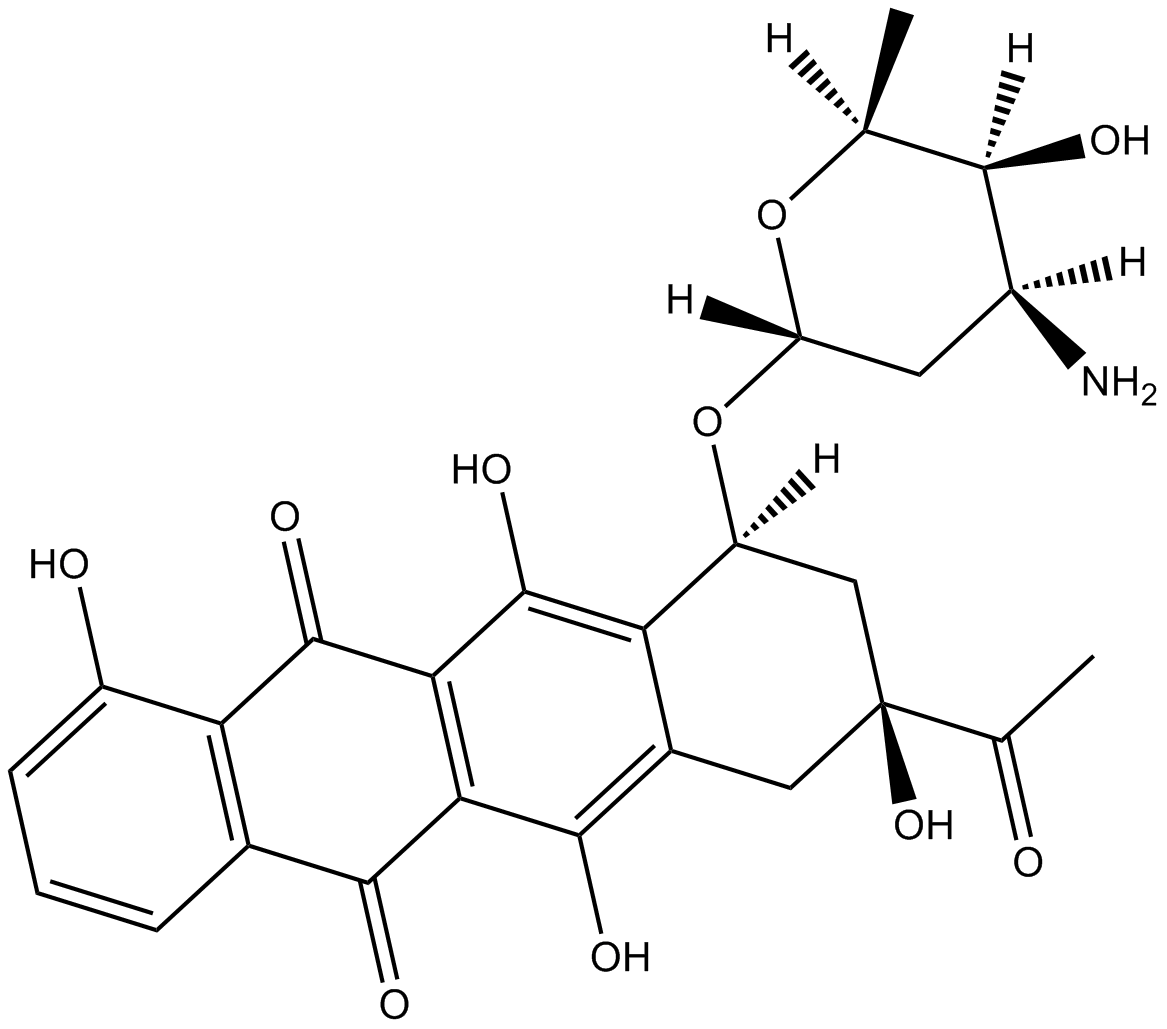
-
GN10733
Carnosic acid
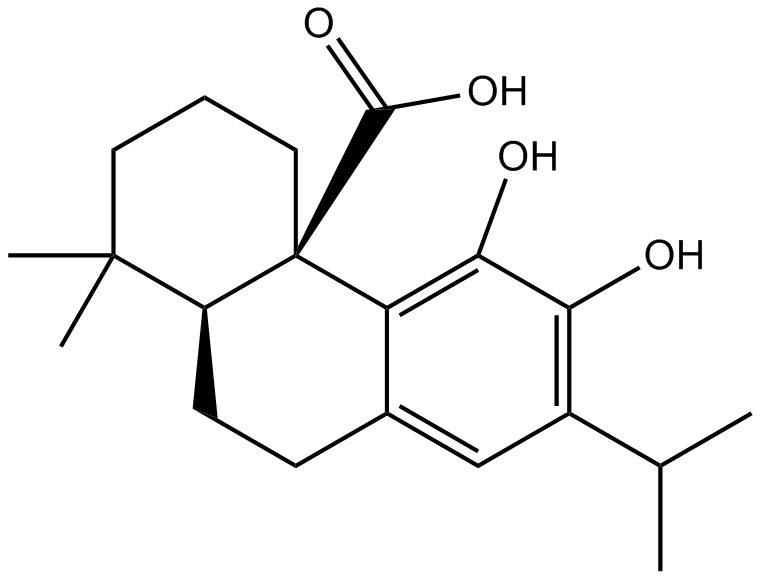
-
GC35611
Carpaine
An alkaloid with antiplasmodial and antithrombocytopenic activities
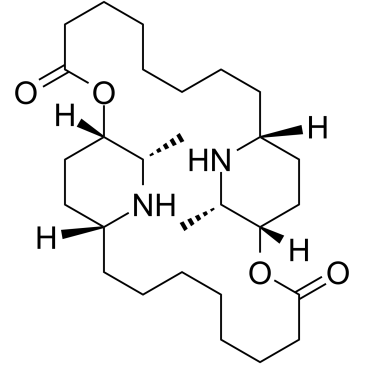
-
GC62887
Carpaine hydrochloride
Carpaine hydrochloride is an alkaloid isolated from Carica papaya Linn anti-thrombocytopenic activity, exhibits potent activity in sustaining platelet counts with no acute toxicity.
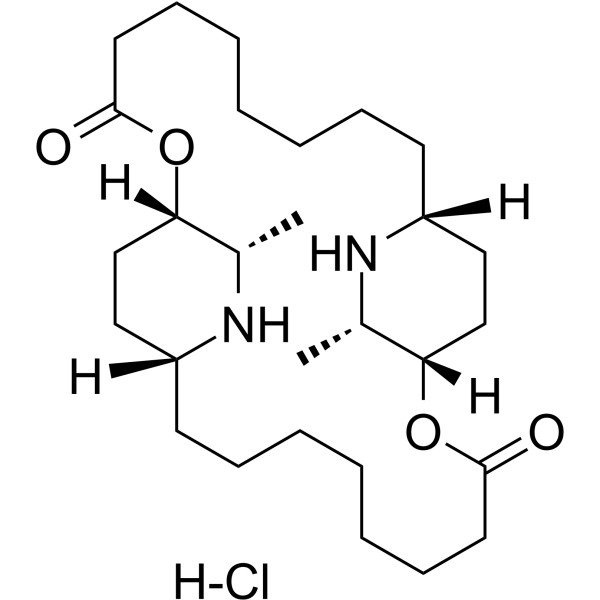
-
GC35612
Carvacrol
Carvacrol is a monoterpenoid phenol isolated from Thymus mongolicus Ronn.
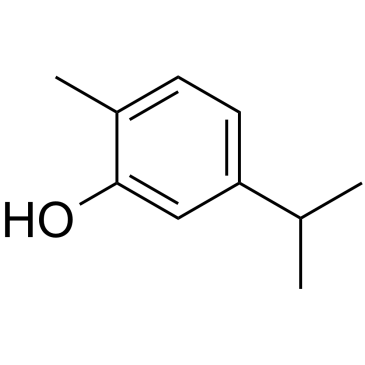
-
GC61640
Carvacrol methyl ether
Carvacrol methyl ether, a Carvacrol analog, can be isolated from plant volatile oil.
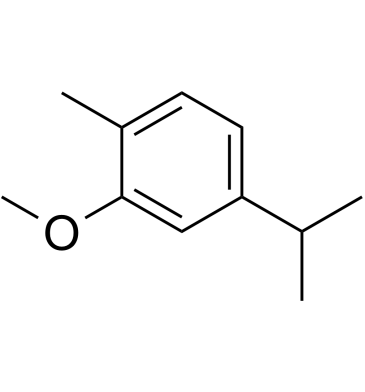
-
GC10303
Caspofungin Acetate
Caspofungin (MK-0991) diacetate is a potent antifungal agent.
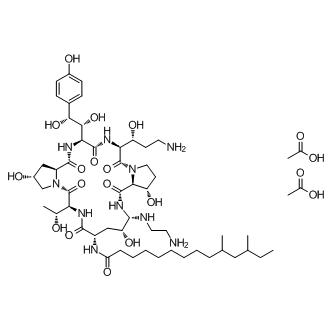
-
GC32841
Catechin ((+)-Catechin)
Catechin ((+)-Catechin) ((+)-Catechin ((+)-Catechin)) inhibits cyclooxygenase-1 (COX-1) with an IC50 of 1.4 μM.
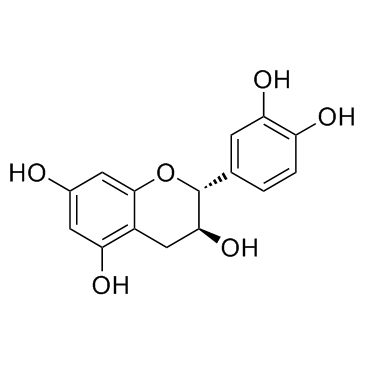
-
GC64117
Caulilexin C
Caulilexin C is a phytoalexin from crucifers with antifungal activity.
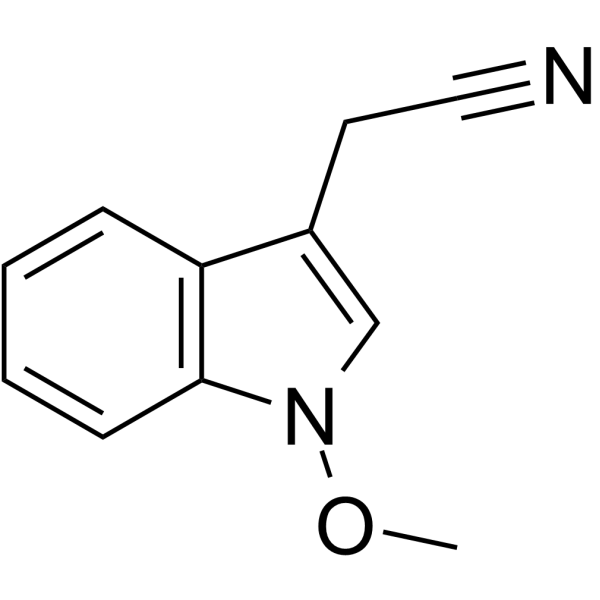
-
GC60100
Cauloside A
Cauloside A (Leontoside A) is a saponin isolated from Dipsacus asper roots.
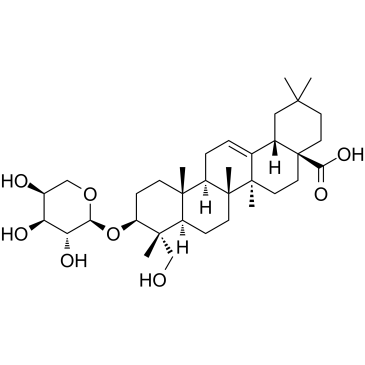
-
GC18910
CAY10654
The gram-negative pathogen Pseudomonas aeruginosa uses N-acylated-L-homoserine lactones (AHLs) in quorum sensing to modulate transcriptional activators, including LasR, and regulate the expression of virulence factors.
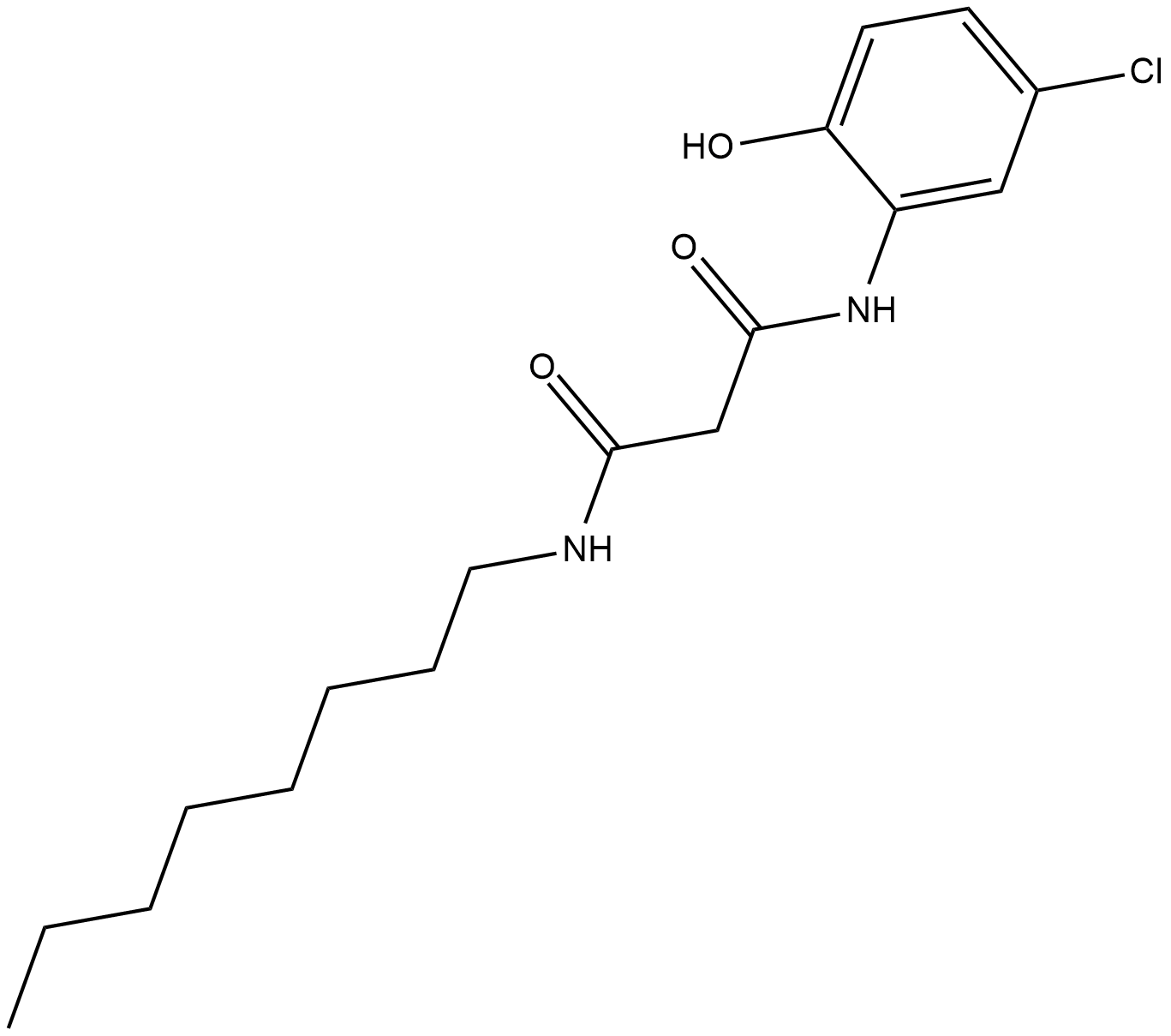
-
GC43196
CAY10704
CAY10704 is a potent inhibitor of hepatitis C virus (HCV) infection (EC50 = 17 nM) that displays low cytotoxicity of virally-infected human hepatoma Huh7.5.1 cells (CC50 = 21.3 μM).
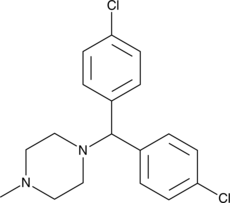
-
GC43197
CAY10711
CAY10711 is a substituted diamine that produces rapid bactericidal activity against both Gram-positive and Gram-negative bacteria, including methicillin-resistant S.
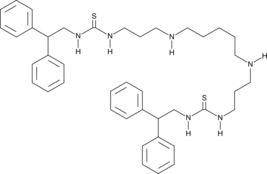
-
GC47052
CAY10742
An oxadiazole antibiotic
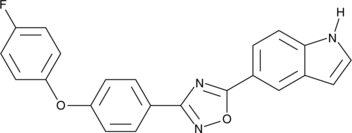
-
GC47062
CAY10766
An antiviral compound
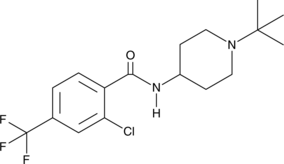
-
GC49139
CAY10784
A STAT3 inhibitor
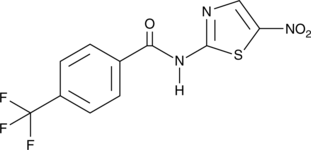
-
GC62116
CBS1117
CBS1117 is a virus entry inhibitor with an IC50 of 70 nM for influenza A virus, A/Puerto Rico/8/34 (H1N1).
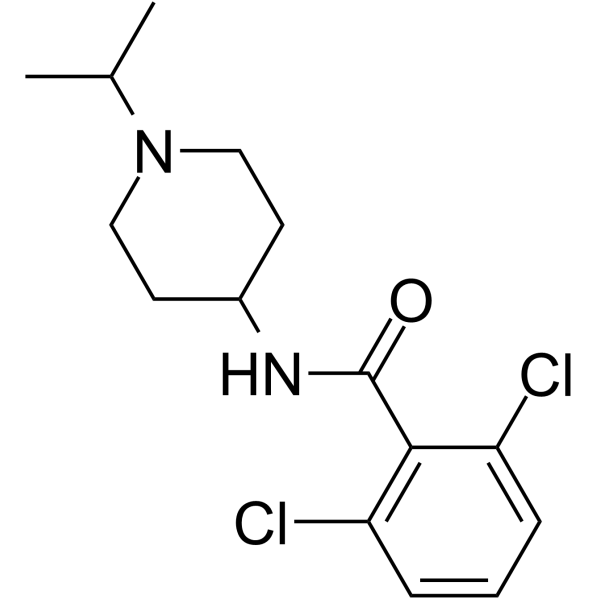
-
GC14727
CCCP
Carbonylcyanide-3-chlorophenylhydrazone (CCCP) is a protonophore, which causes uncoupling of proton gradient in the inner mitochondrial membrane, thus inhibiting the rate of ATP synthesis.
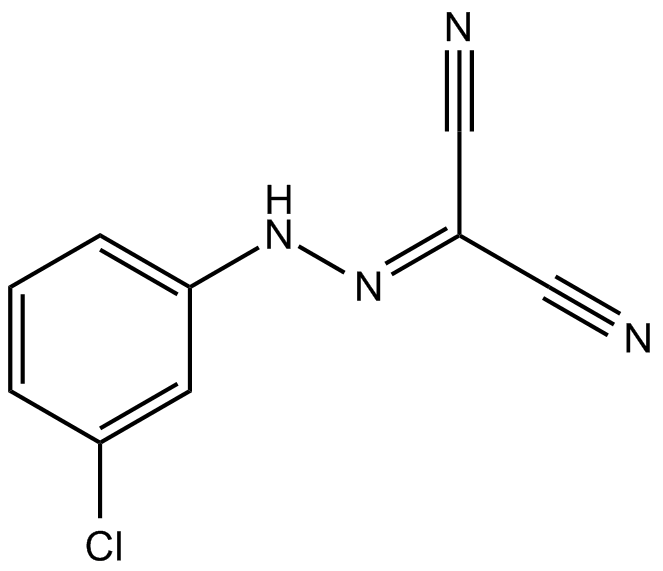
-
GC63779
CCF0058981
CCF0058981 (CCF981), 3-chlorophenyl analogue, is a noncovalent SARS-CoV-2 3CLpro (SC2) inhibitor with an IC50 of 68 nM.
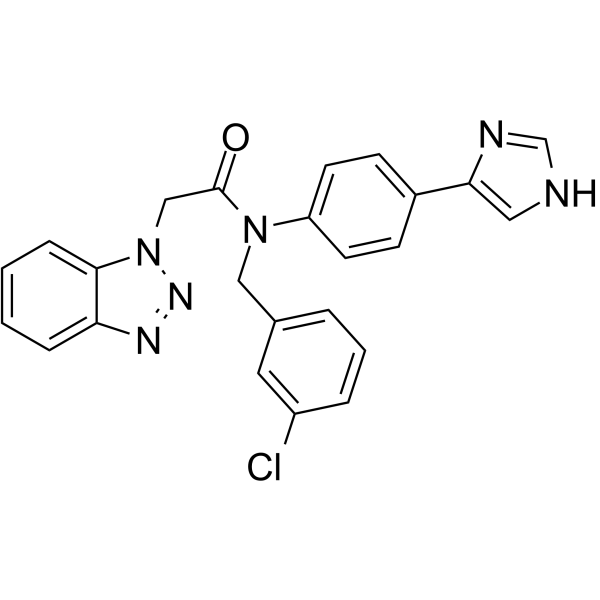
-
GC32367
CCR5 antagonist 1
CCR5 antagonist 1 is a CCR5 antagonist which can inhibit HIV replication extracted from WO 2004054974 A2.
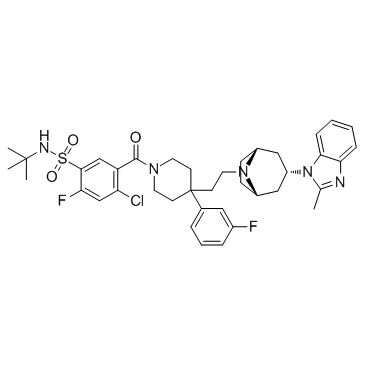
-
GC12871
CDK9 inhibitor
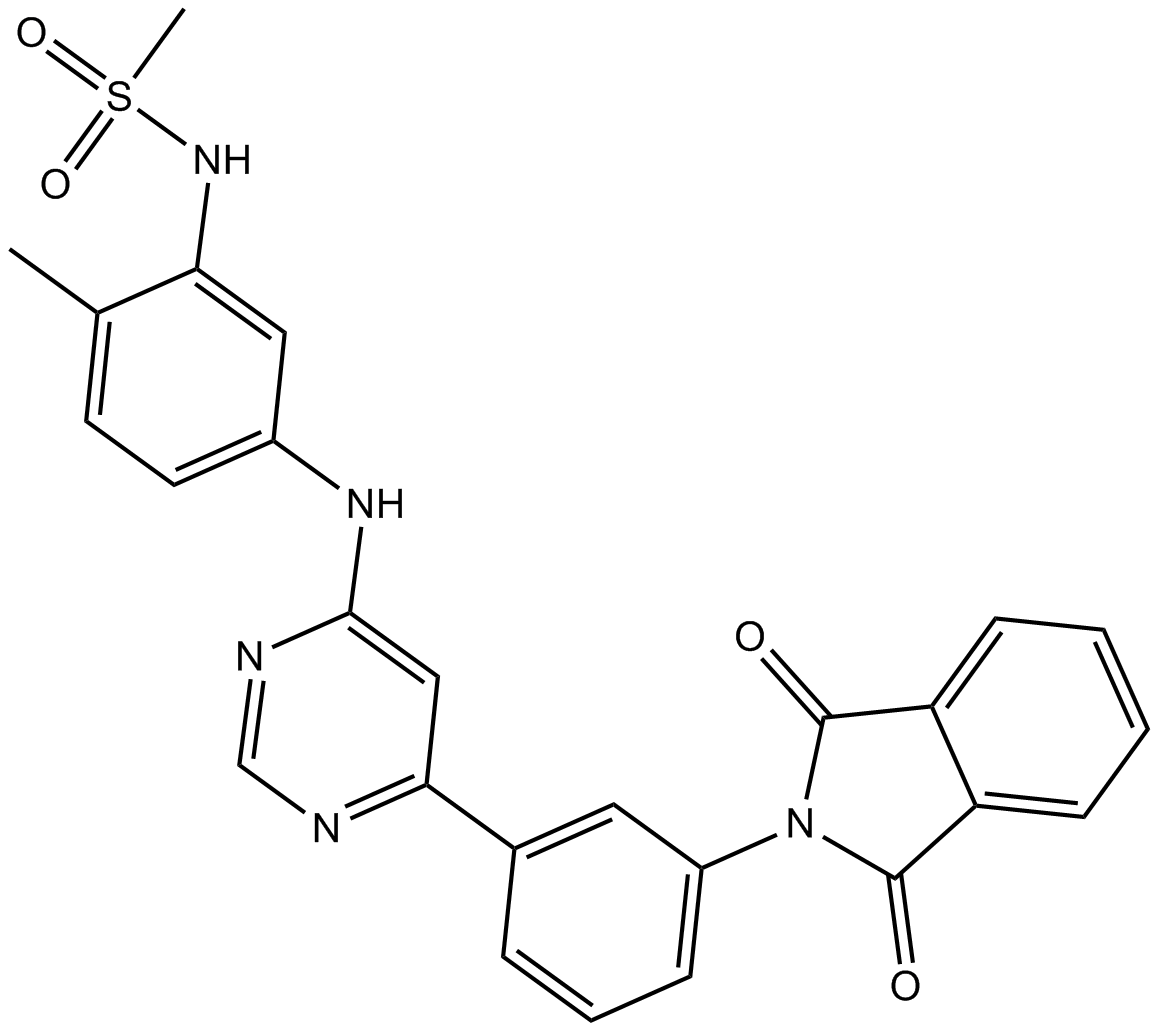
-
GC31773
Cecropin A
Cecropin A is a linear 37-residue antimicrobial polypeptide, with anticancer and anti-inflammatory activity.
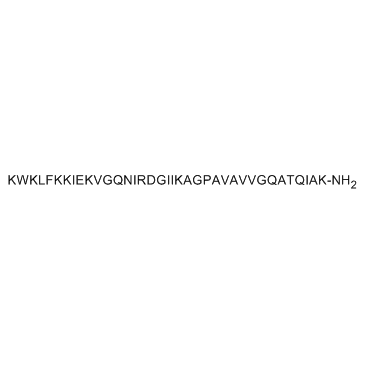
-
GC34229
Cecropin A TFA
Cecropin A TFA is a linear 37-residue antimicrobial polypeptide isolated from Hyalaphora cecropia pupae.
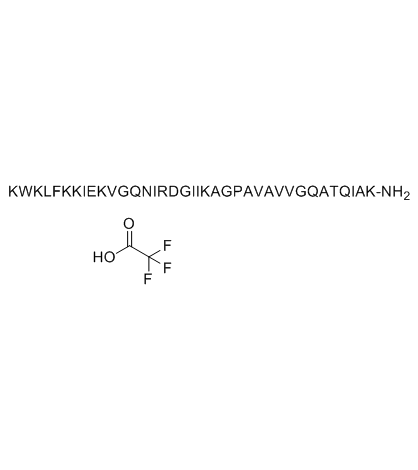
-
GC38681
Cedrol
A sesquiterpene alcohol
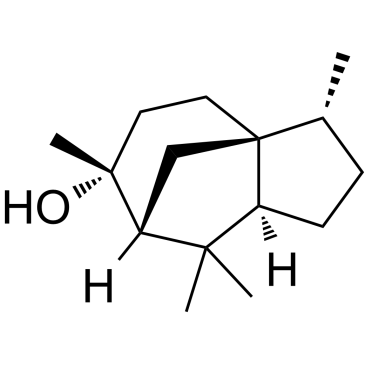
-
GC35639
CEF1, Influenza Matrix Protein M1 58-66
CEF1, Influenza Matrix Protein M1 58-66 is an epitope derived from the matrix protein of the influenza A virus.
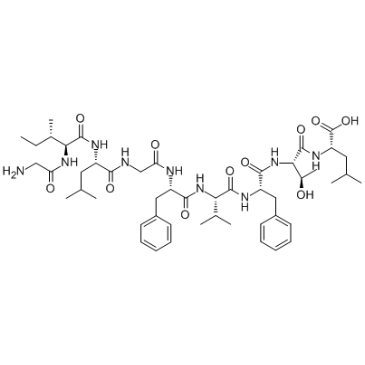
-
GC35642
CEF20
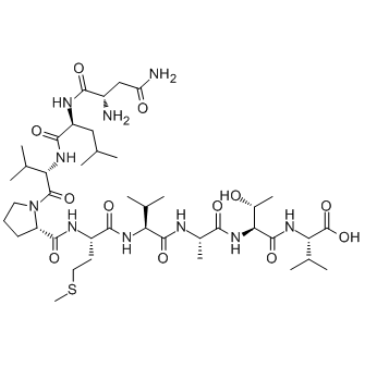
-
GC32293
CEF3
CEF3 (SIIPSGPLK) corresponds to aa 13-21 of the influenza A virus M1 protein.
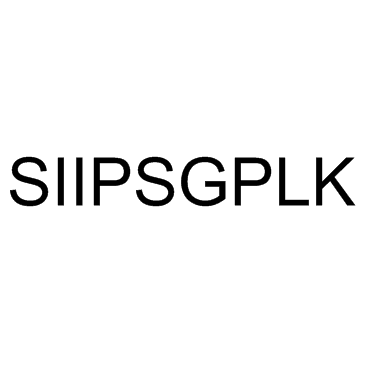
-
GC32329
CEF6
CEF6 is a 9-aa-long peptide corresponding to aa 418-426 of the influenza A virus (H1N1) nucleocapsid protein.
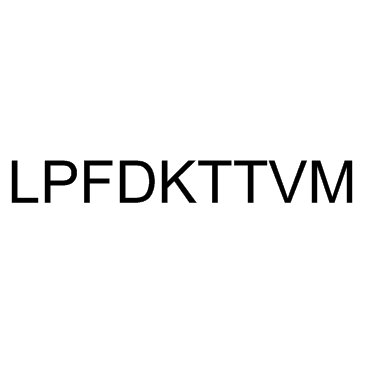
-
GC65613
Cefaclor
Cefaclor is a well-absorbed orally active cephalosporin antibiotic. Cefaclor can specifically bind to specific for penicillin-binding protein 3 (PBP3). Cefaclor can be used for the research kinds of infections caused by bacteria, such as respiratory tract infections, bacterial bronchitis, pharyngitis and skin infections.
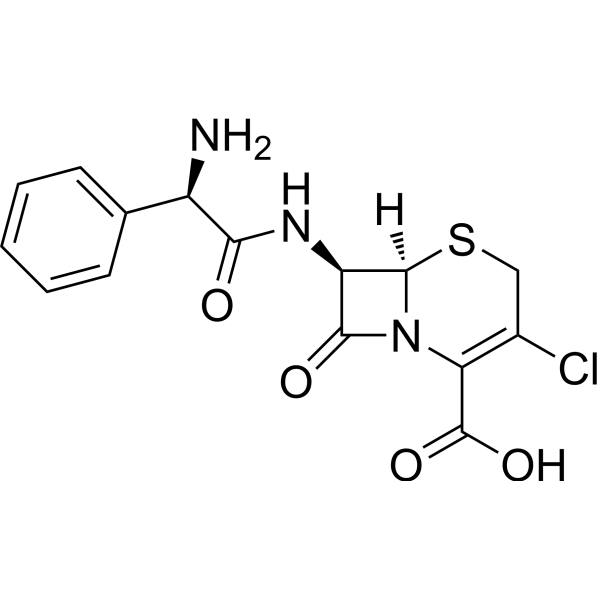
-
GC32099
Cefadroxil (BL-S 578)
Cefadroxil (BL-S 578) is a broad-spectrum antibiotic of the cephalosporin type, effective in Gram-positive and Gram-negative bacterial infections.
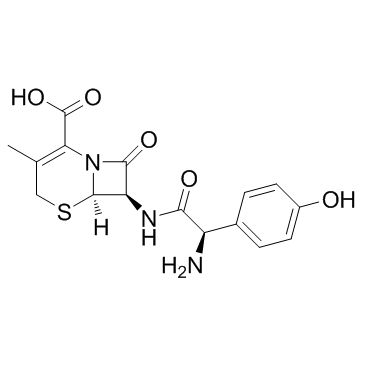
-
GC16253
Cefadroxil (hydrate)
broad-spectrum antibiotic
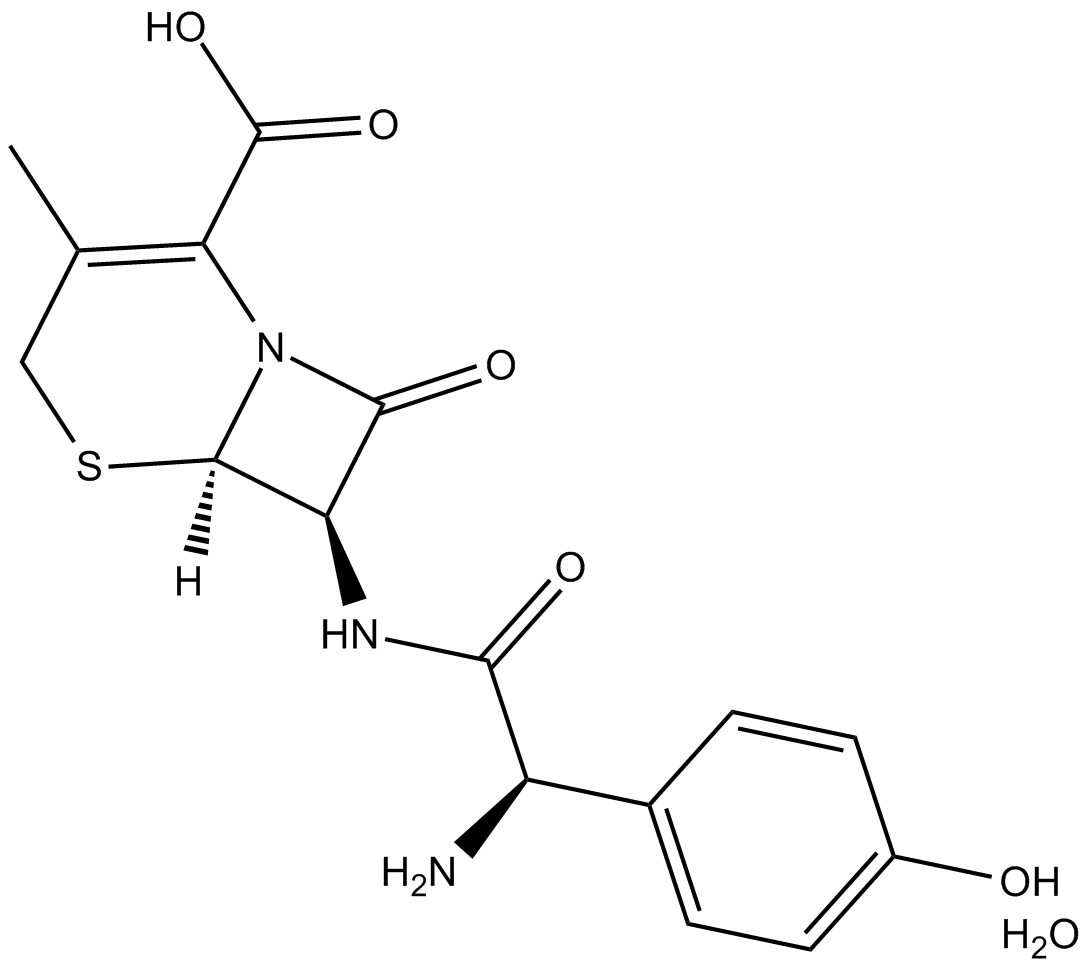
-
GC48489
Cefadroxil-d4 (trifluoroacetate salt)
An internal standard for the quantification of cefadroxil
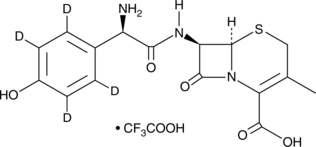
-
GC49274
Cefalonium
A cephalosporin antibiotic
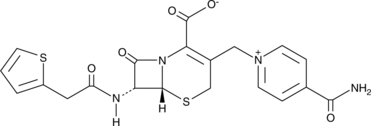
-
GC32240
Cefamandole (Cephamandole)
Cefamandole (Cephamandole) is a second-generation broad-spectrum cephalosporin antibiotic.
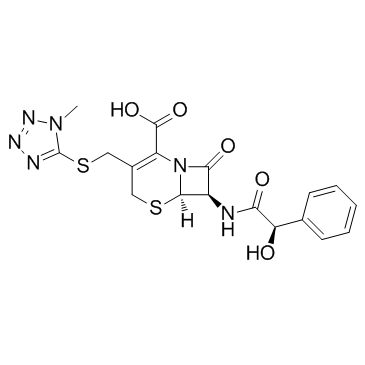
-
GC16920
Cefamandole (sodium salt)
Cefamandole Sodium Salt is a second-generation broad-spectrum cephalosporin antibiotic.
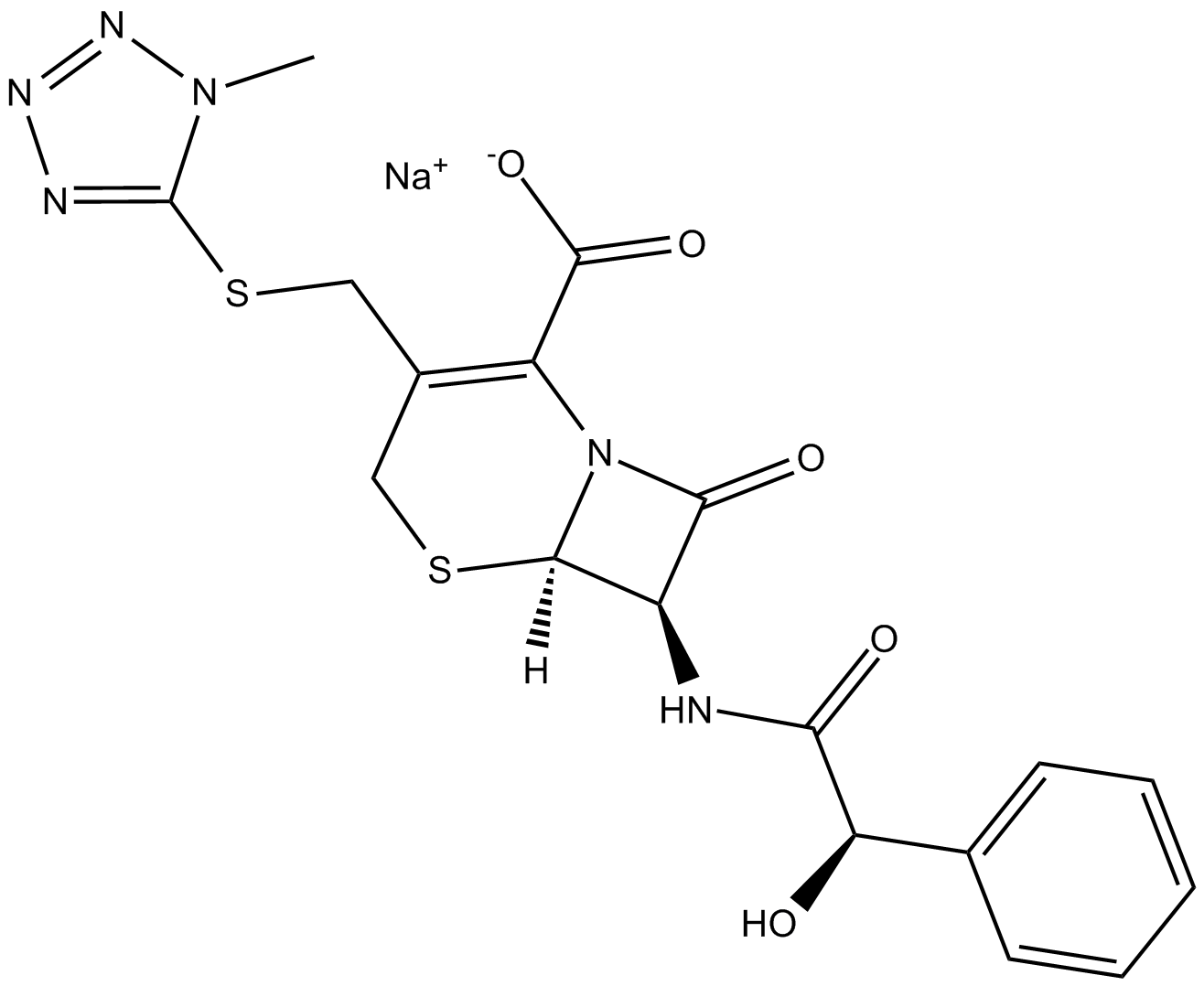
-
GC32123
Cefamandole nafate (Cefamandole formate sodium)
Cefamandole nafate (Cefamandole formate sodium) (Cefamandole formate sodium) is a second-generation broad-spectrum cephalosporin antibiotic.
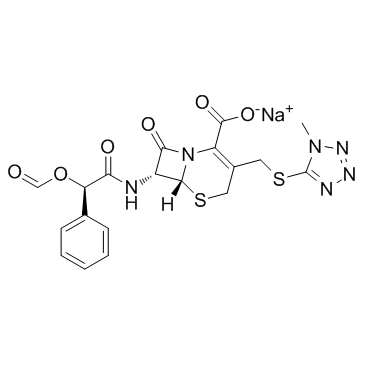
-
GC14253
Cefapirin
Cefapirin (Cefapirin) is an ephalosporin antibiotic with broad-spectrum antimicrobial activity.
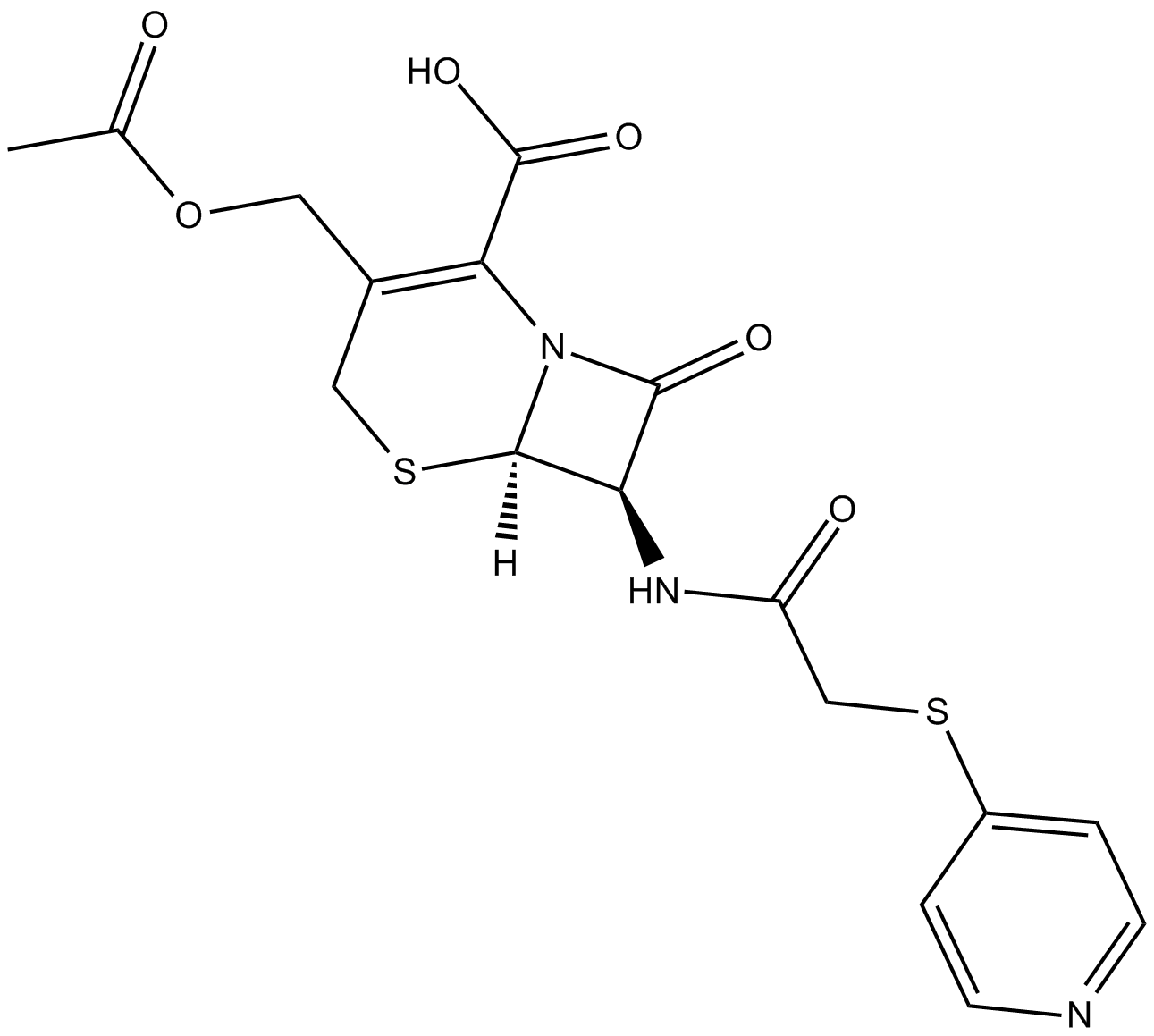
-
GC38750
Cefathiamidine
Cefathiamidine is a first-generation cephalosporin antibacterial agent and is used to treat infections caused by susceptible bacteria.
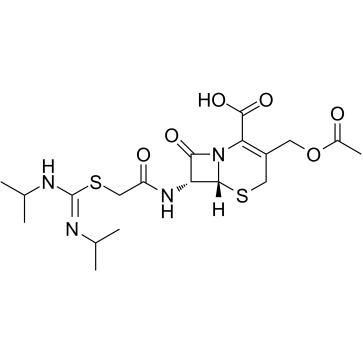
-
GC25208
Cefatrizine
Cefatrizine, a broad-spectrum, semisynthetic, first-generation cephalosporin with antibacterial activity, binds to and inactivates penicillin-binding proteins (PBPs) located on the inner membrane of the bacterial cell wall.
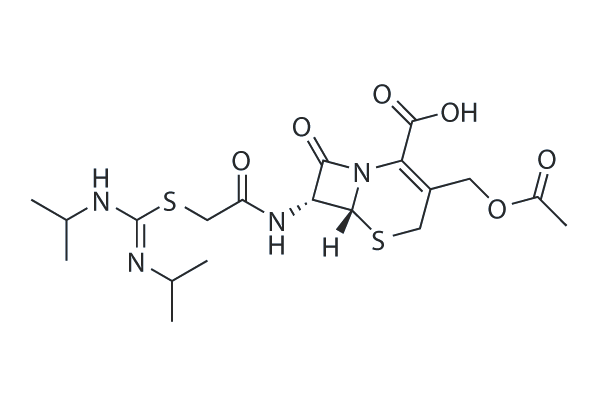
-
GC39542
Cefazedone
Cefazedone (Refosporen), a first-generation cephalosporin, is a time-dependent antibiotic with activity against Gram-positive and Gram-negative bacteria.
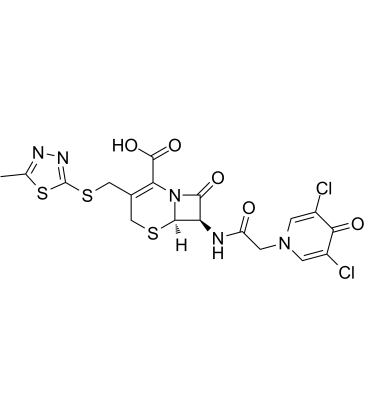
-
GC60683
Cefazolin
Cefazolin (Cephazolin) is a first-generation cephalosporin antibiotic and can be used in varieties of bacterial infections research.
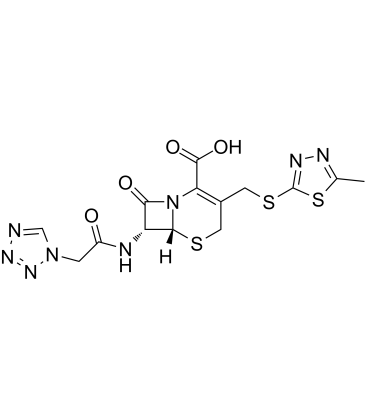
-
GC10179
Cefazolin (sodium salt)
Cefazolin (sodium salt) is a first-generation cephalosporin antibiotic and can be used in varieties of bacterial infections research.
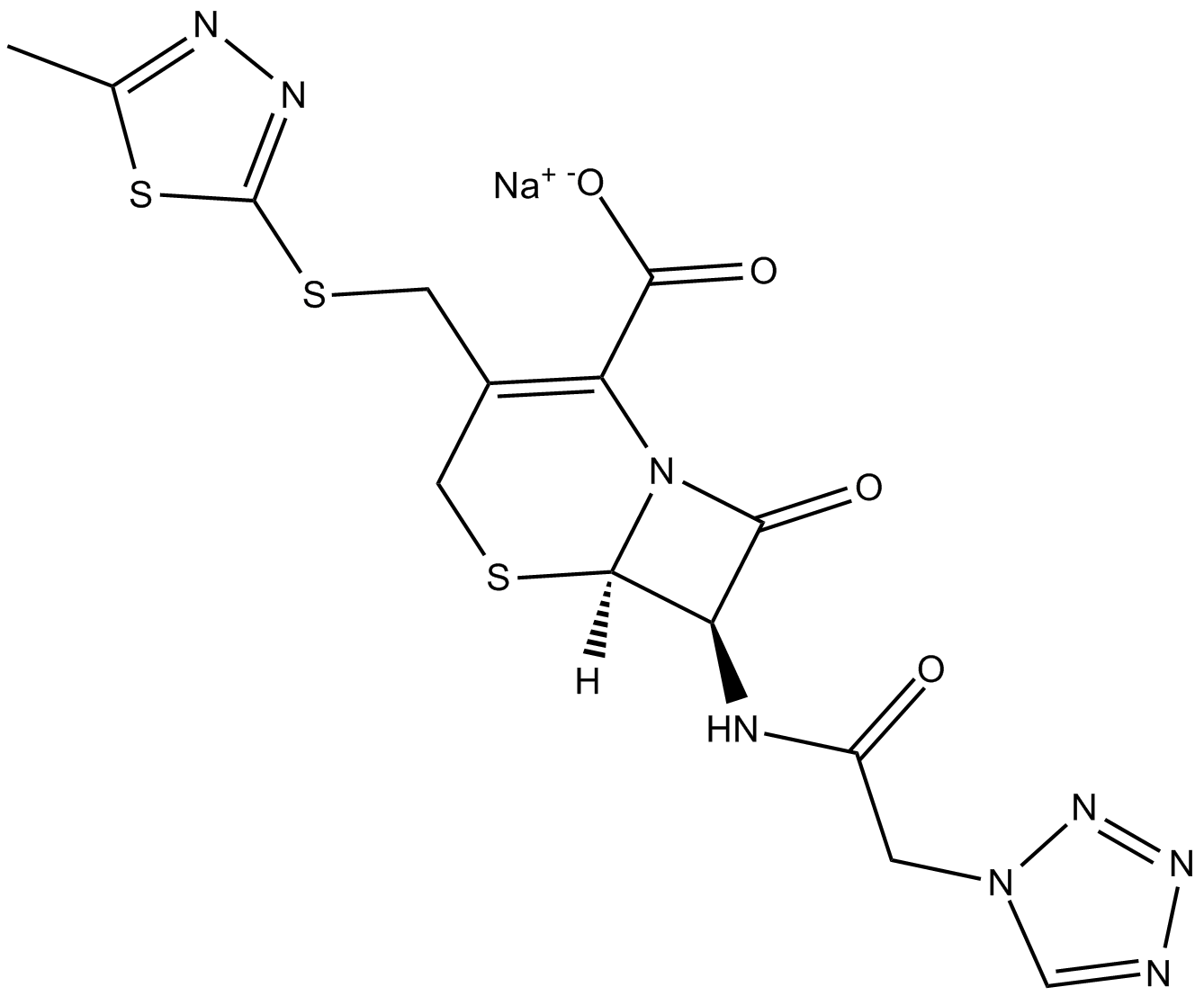
-
GC43222
Cefazolin-13C2,15N
Cefazolin-13C2,15N is intended for use as an internal standard for the quantification of cefazolin by GC- or LC-MS.
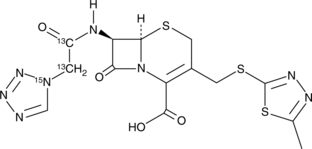
-
GC38751
Cefcapene pivoxil hydrochloride
Cefcapene pivoxil hydrochloride, an antibiotic, is an orally active and potent 3rd-generation cephalosporin with a wide spectrum of anti-bacterial activity.
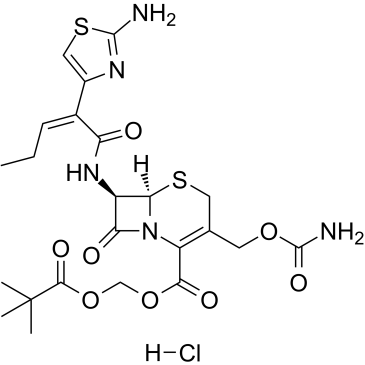
-
GC39602
Cefcapene pivoxil hydrochloride hydrate
Cefcapene pivoxil hydrochloride hydrate is a prodrug and an orally active 3rd-generation cephalosporin with broad-spectrum of?anti-bacterial?activity.
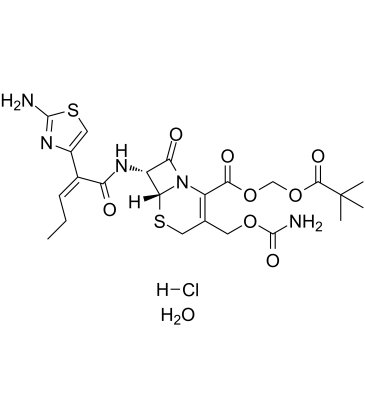
-
GC16083
Cefdinir
Third generation cephalosporin antibiotic
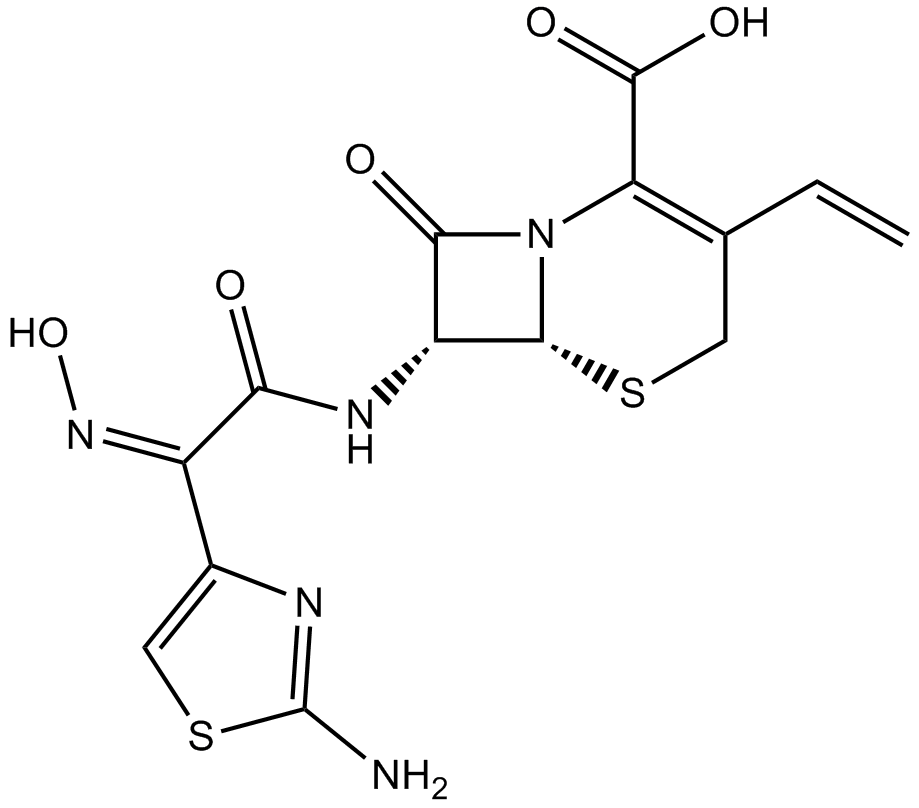
-
GC18036
Cefditoren Pivoxil
Cephalosporin antibiotic
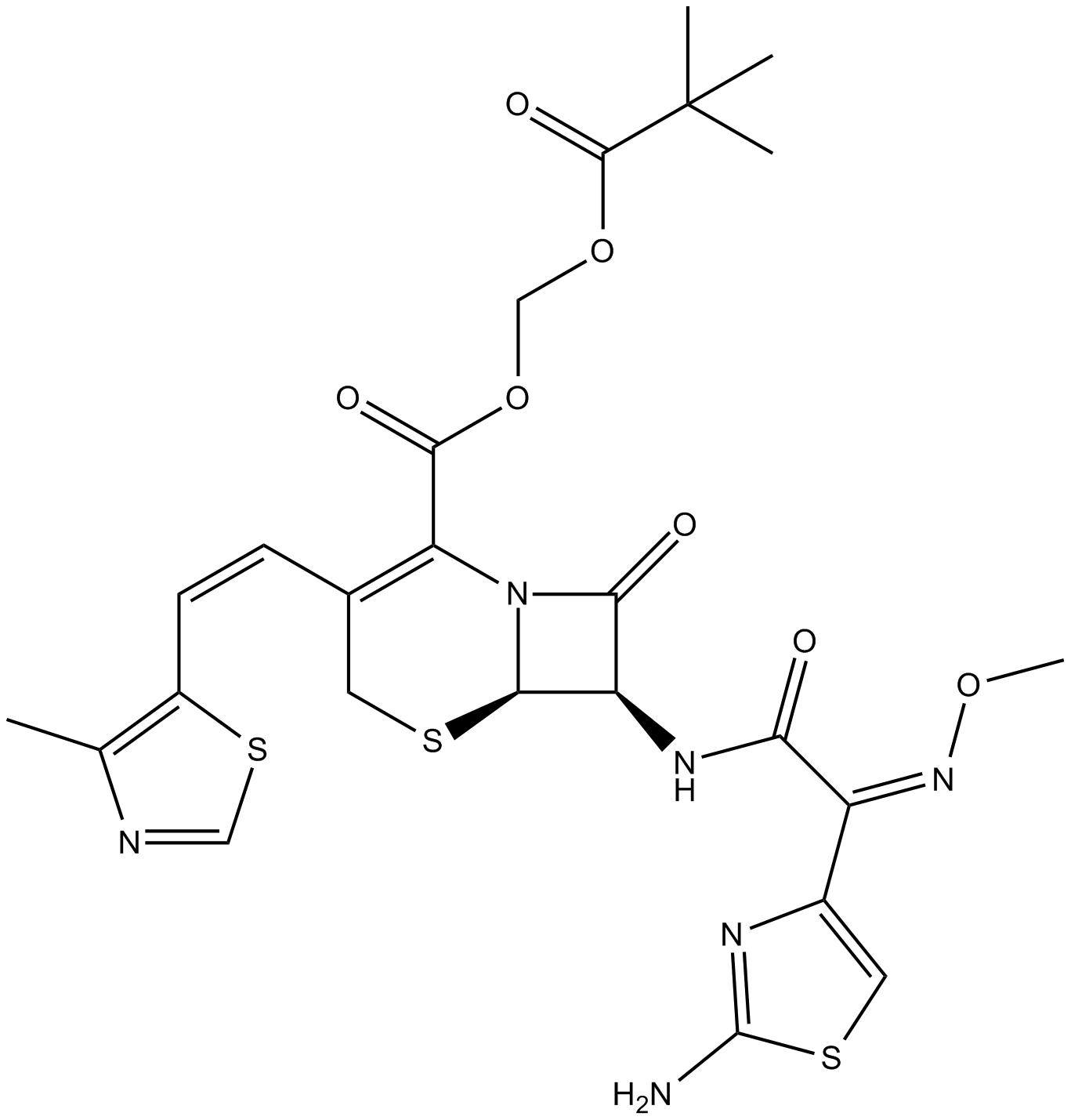
-
GC64043
Cefditoren sodium
Cefditoren sodium (ME 1206) is a broad-spectrum, third-generation, oral cephalosporin antibacterial with enhanced stability against many common β lactamases.
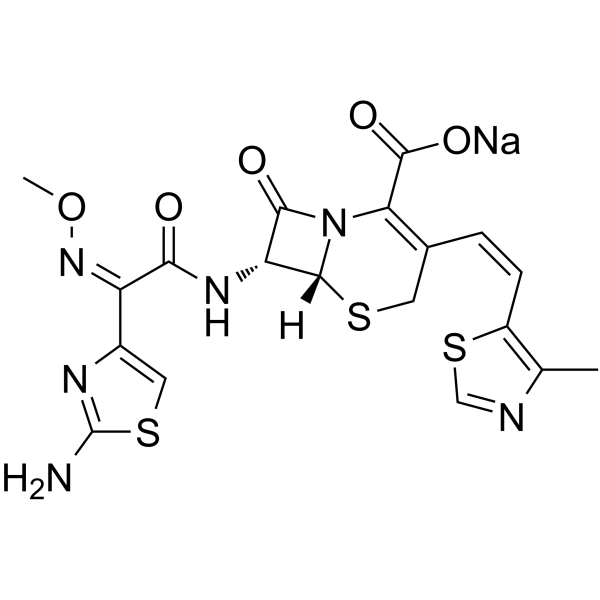
-
GC13111
Cefepime Dihydrochloride Monohydrate
broad-spectrum cephalosporin

-
GC63974
Cefetamet
Cefetamet is a cephalosporin antibiotic.
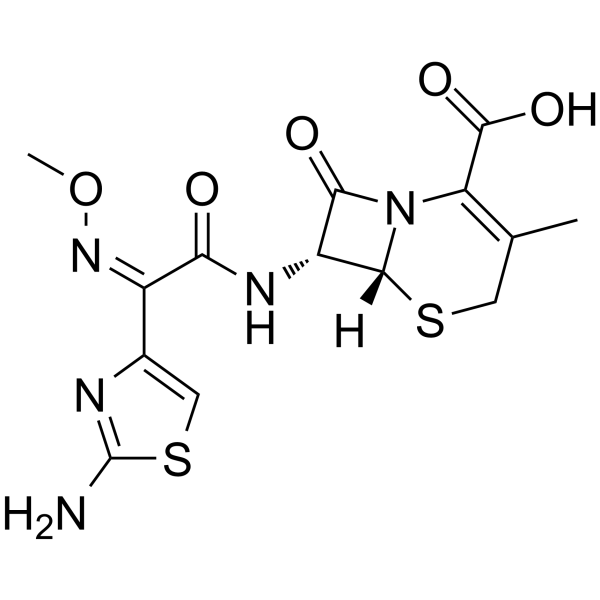
-
GC33952
Cefetamet pivoxil hydrochloride (Ro 15-8075)
Cefetamet pivoxil hydrochloride (Ro 15-8075) is an oral third generation cephalosporin antibiotic.
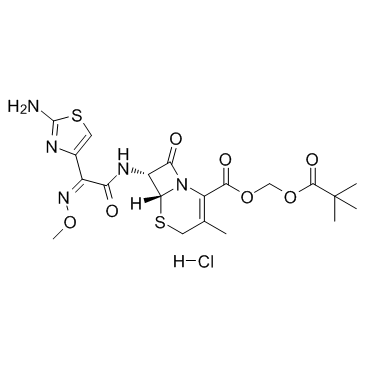
-
GC32079
Cefiderocol (S-649266)
Cefiderocol (S-649266) (S-649266) is a siderophore cephalosporin which has a potent activity against a broad range of aerobic Gram-negative bacterial species with MIC50s of 2 μg/mL or less.
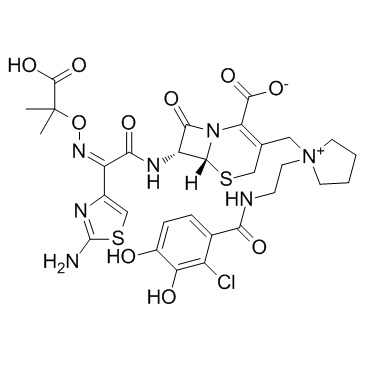
-
GC14341
Cefixime
third generation cephalosporin antibiotic
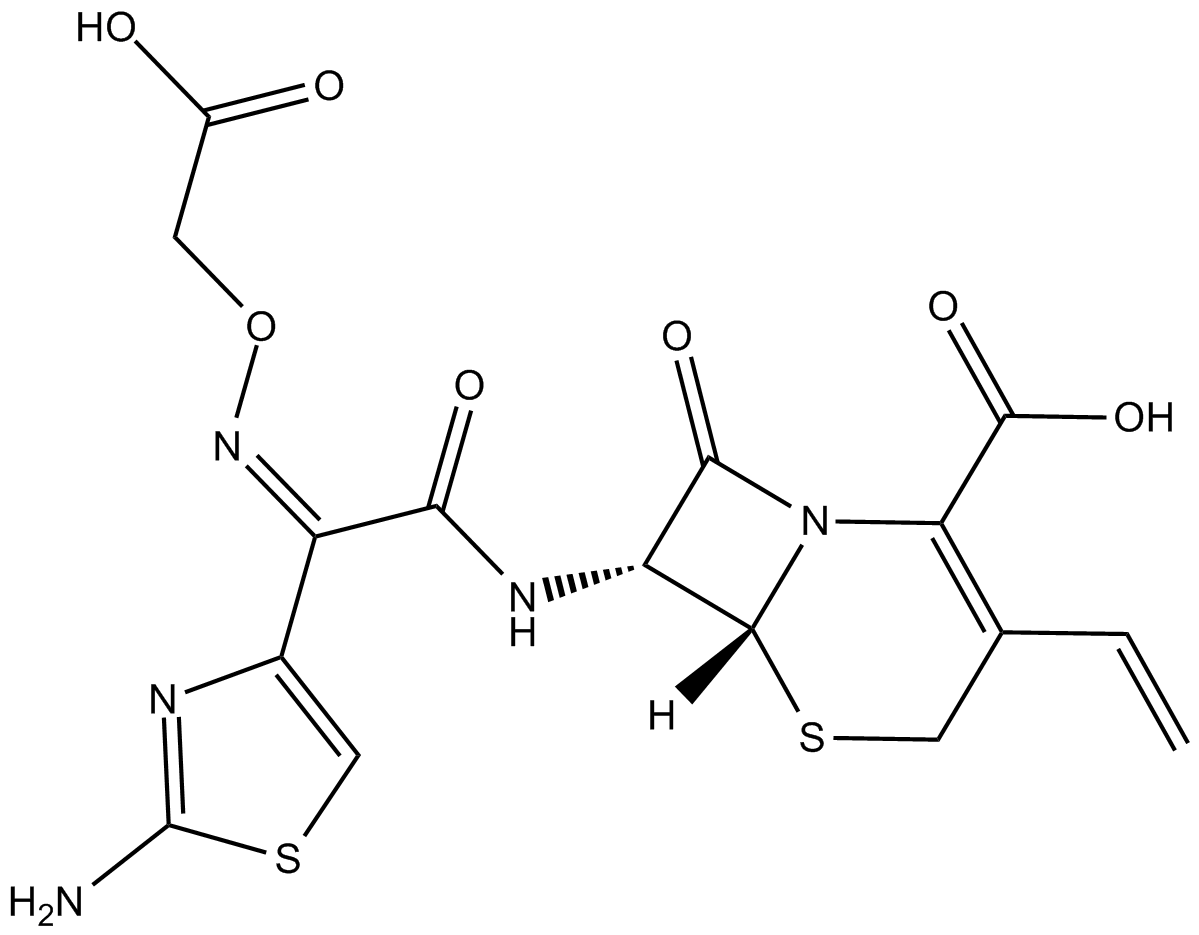
-
GC32235
Cefmenoxime hydrochloride (Cefmenoxime hemihydrochloride)
Cefmenoxime (SCE-1365) hydrochloride is a new semisynthetic cephalosporin antibiotic.
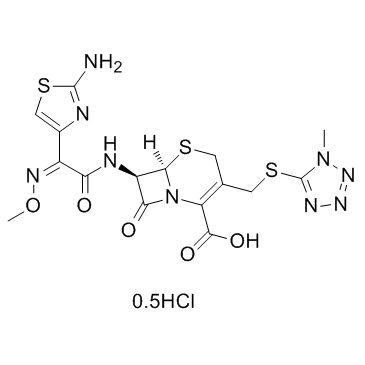
-
GC47068
Cefmetazole
A cephamycin antibiotic
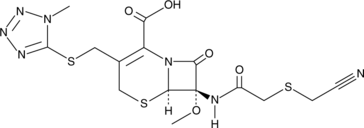
-
GC32168
Cefmetazole sodium (Sodium cefmetazole)
Cefmetazole sodium (Sodium cefmetazole) (Sodium cefmetazole) is a semisynthetic cephamycin antibiotic with broad-spectrum antibacterial activity, covering gram-positive, gram-negative, and anaerobic bacteria.
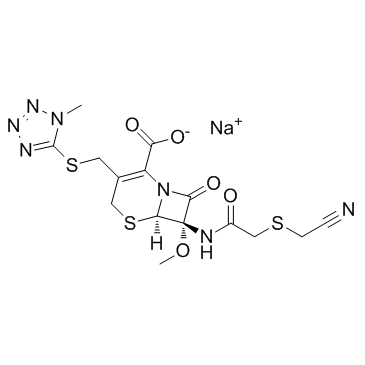
-
GC61805
Cefminox sodium
Cefminox sodium (MT-141) is a semisynthetic cephamycin, which exhibits a broad spectrum of antibacterial activity.
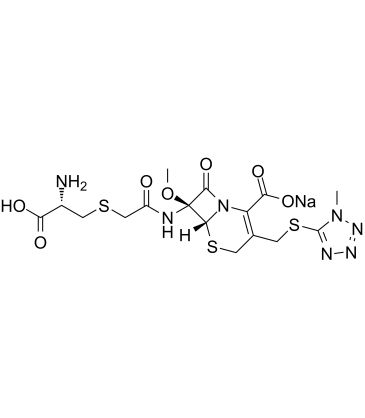
-
GC39537
Cefodizime
Cefodizime is a third generation cephalosporin antibiotic with a broad spectrum of antibacterial activity.
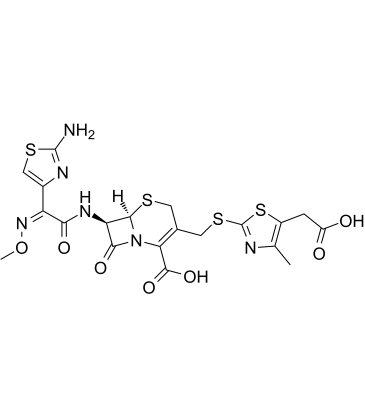
-
GC60104
Cefodizime sodium
Cefodizime sodium is a third generation cephalosporin antibiotic with a broad spectrum of antibacterial activity.
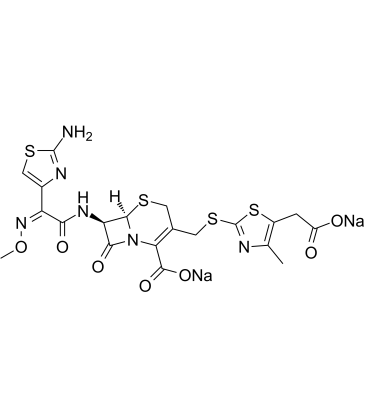
-
GC17813
Cefonicid (sodium salt)
Cefonicid (sodium salt) is a broadspectrum cephalosporin antibiotic which inhibits the formation of the bacterial cell wall.
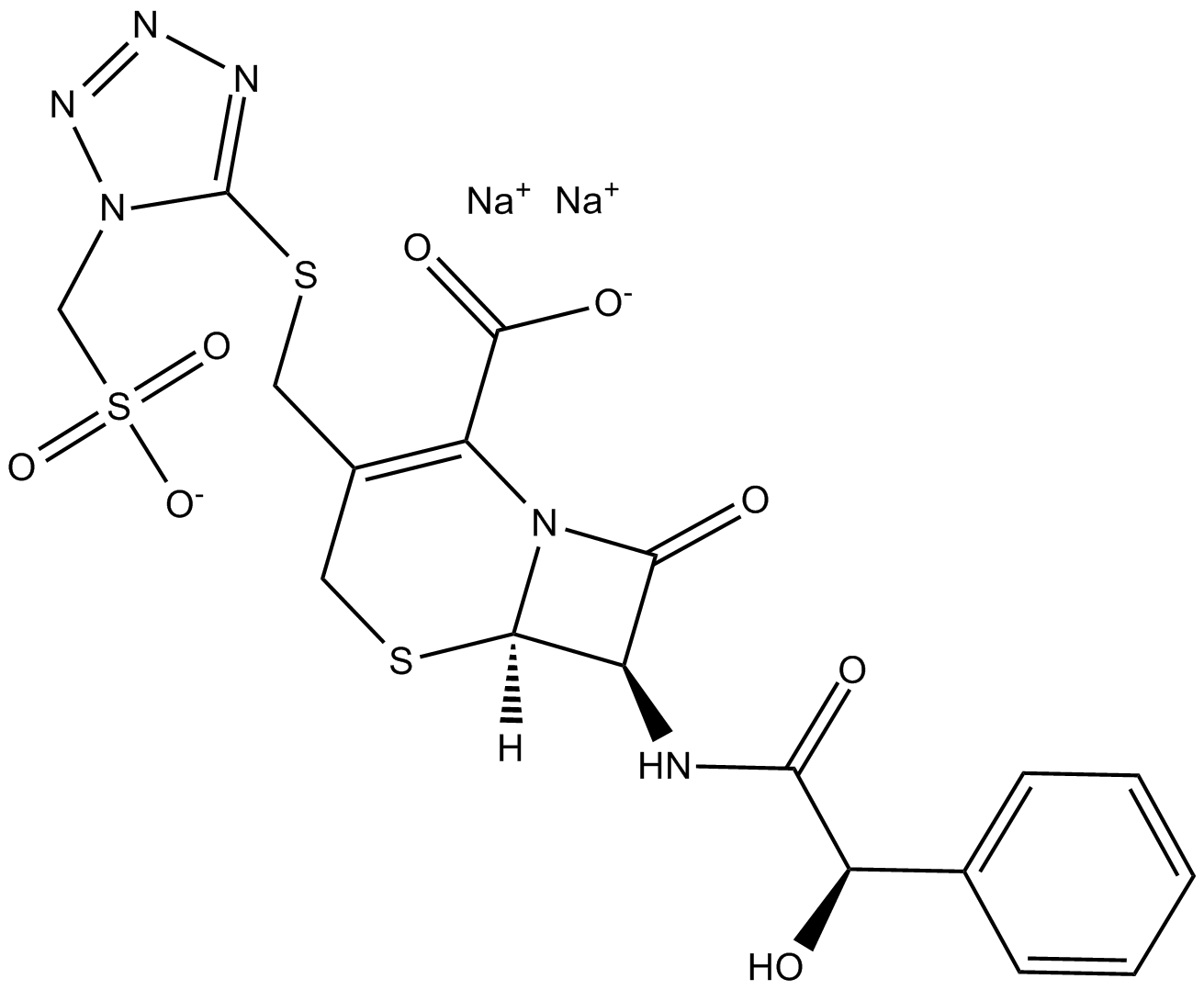
-
GC16501
Cefoperazone
Third-generation cephalosporin antibiotic
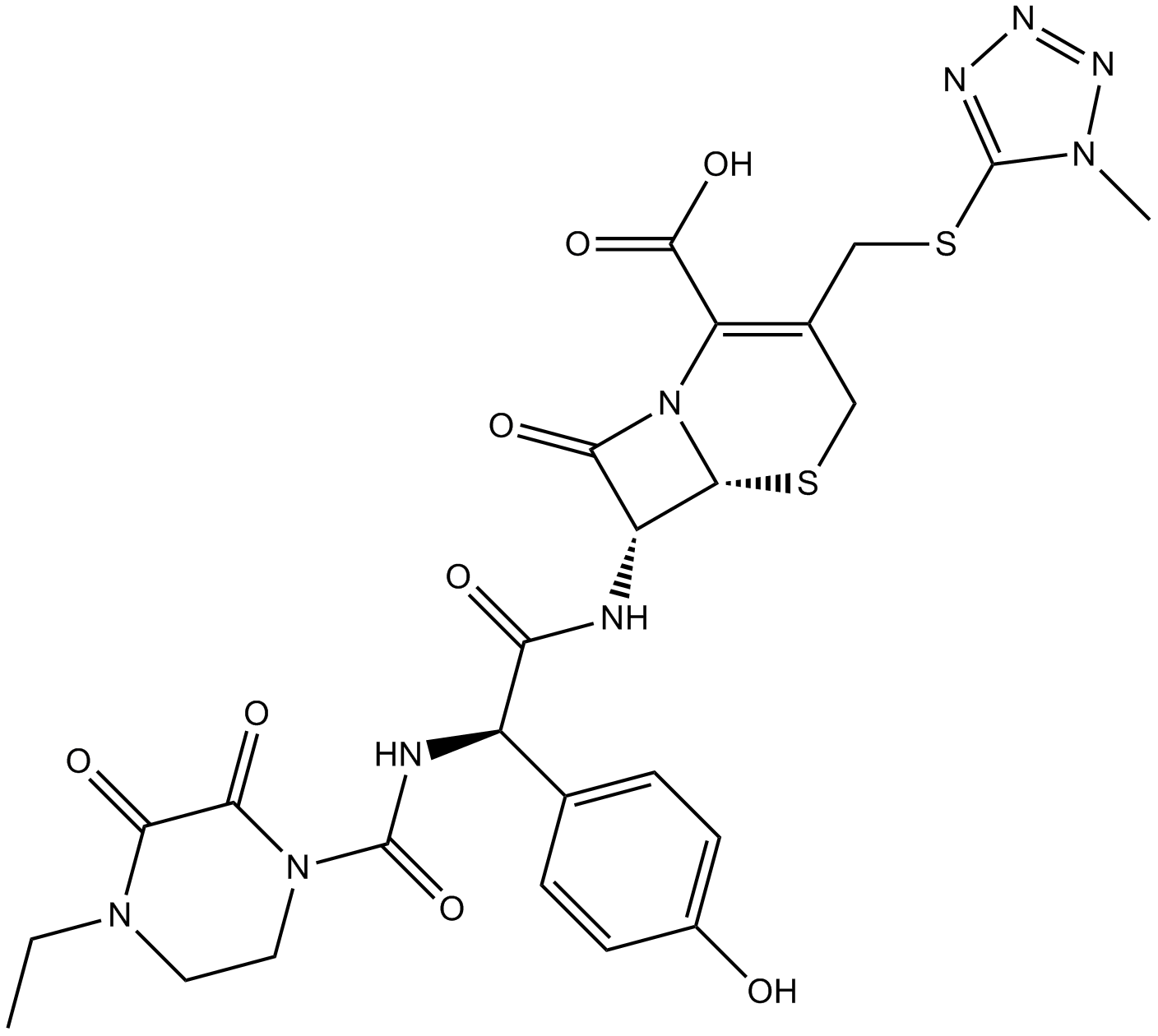
-
GC15412
Cefoperazone (sodium salt)
cephalosporin antibiotic
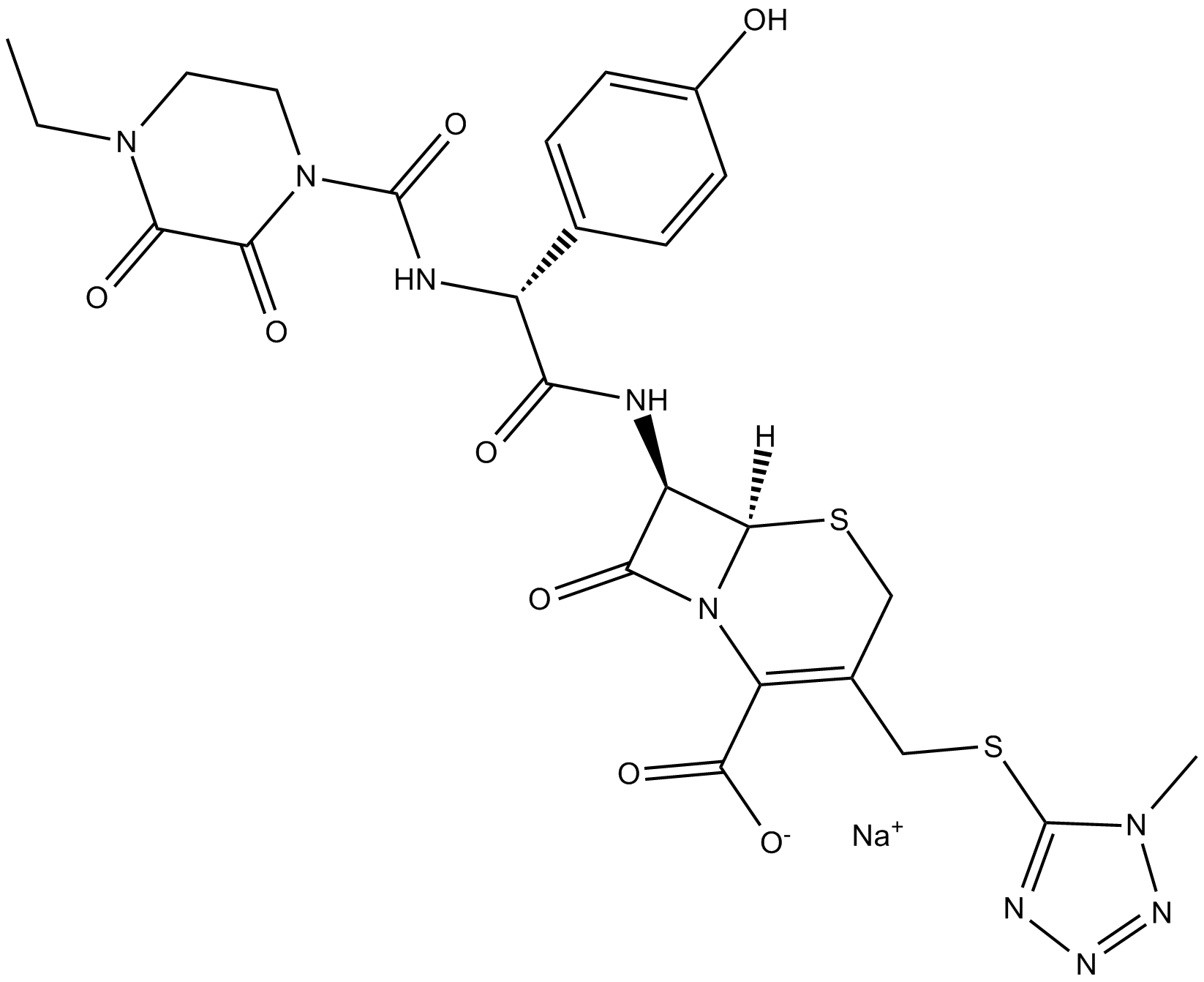
-
GC60684
Ceforanide
Ceforanide is a second generation cephalosporin administered intravenously or intramuscularly.
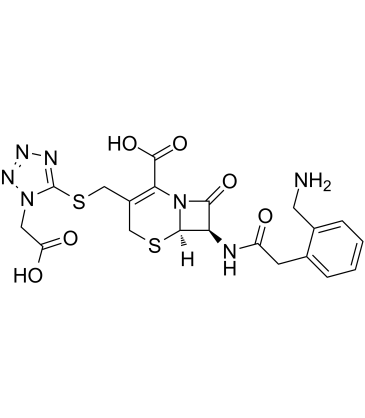
-
GC17728
Cefoselis
β-lactam antibiotic,broad spectrum
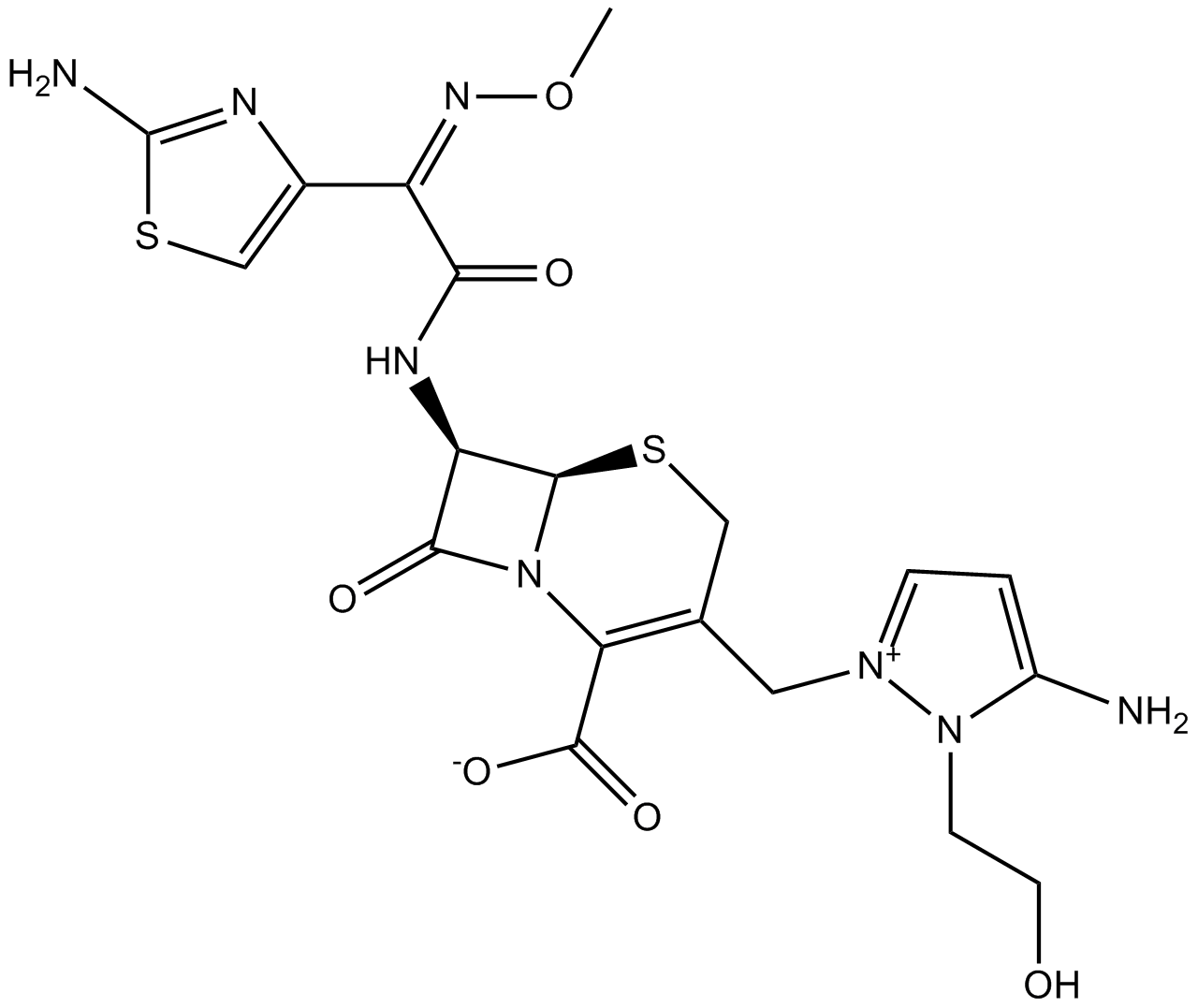
-
GC16076
Cefoselis hydrochloride
beta-lactam antibiotic
-
GC15398
Cefoselis Sulfate
beta-lactam antibiotic
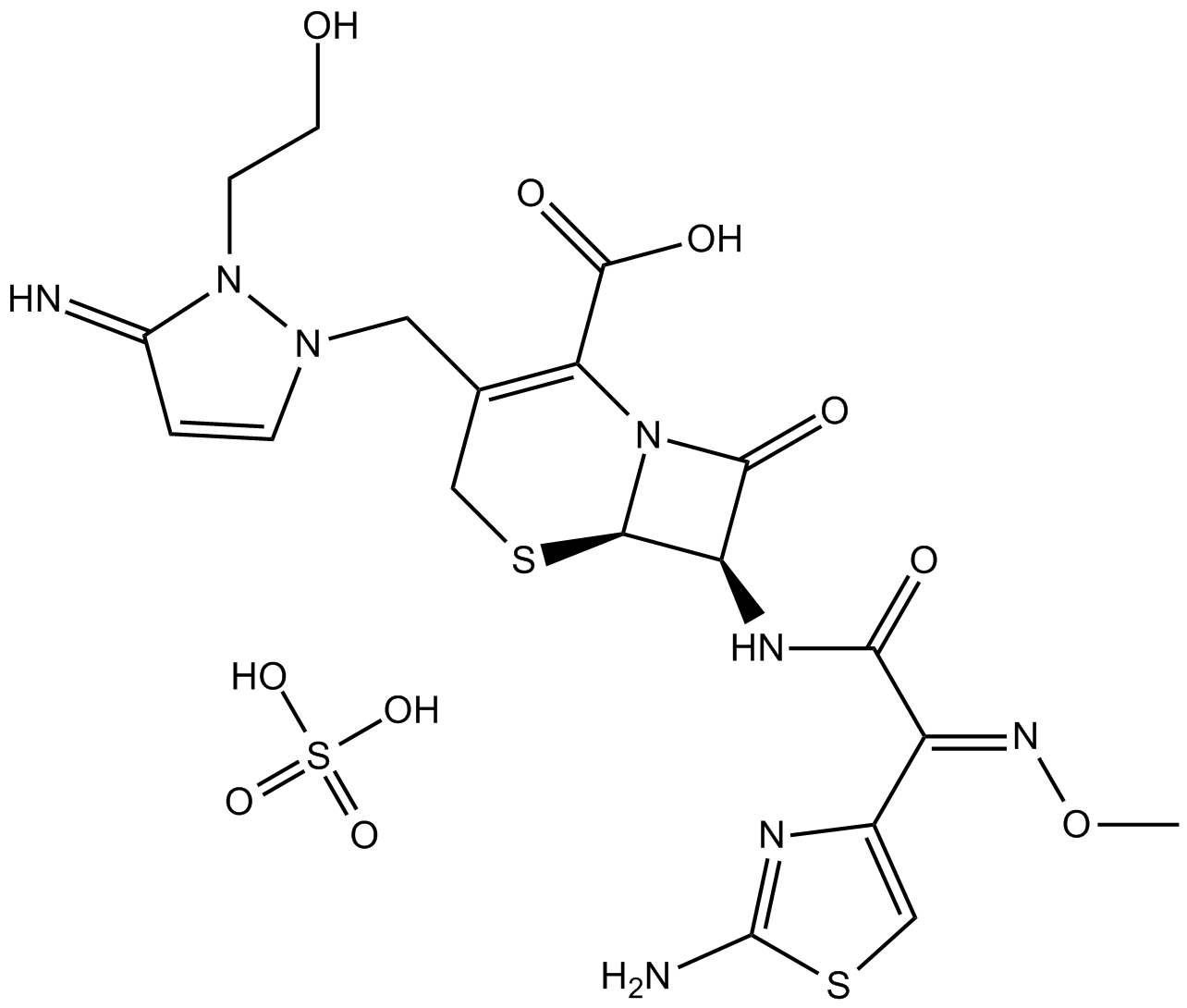
-
GC60685
Cefotaxime
Cefotaxime, a β-lactamase stable cephalosporin and a third-generation cephalosporin antibiotic, possesses broad-spectrum antibiotic activity against numerous Gram-positive and Gram-negative bacteria.
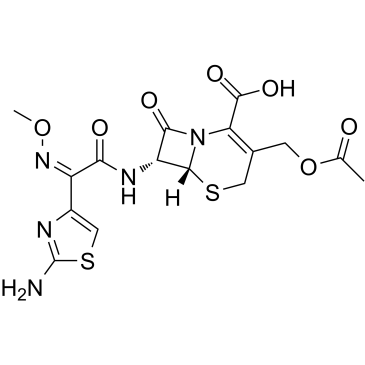
-
GC16544
Cefotaxime (sodium salt)
Cefotaxime (Cefotaxim) sodium, a β-lactamase stable cephalosporin and a third-generation cephalosporin antibiotic, possesses broad-spectrum antibiotic activity against numerous Gram-positive and Gram-negative bacteria.
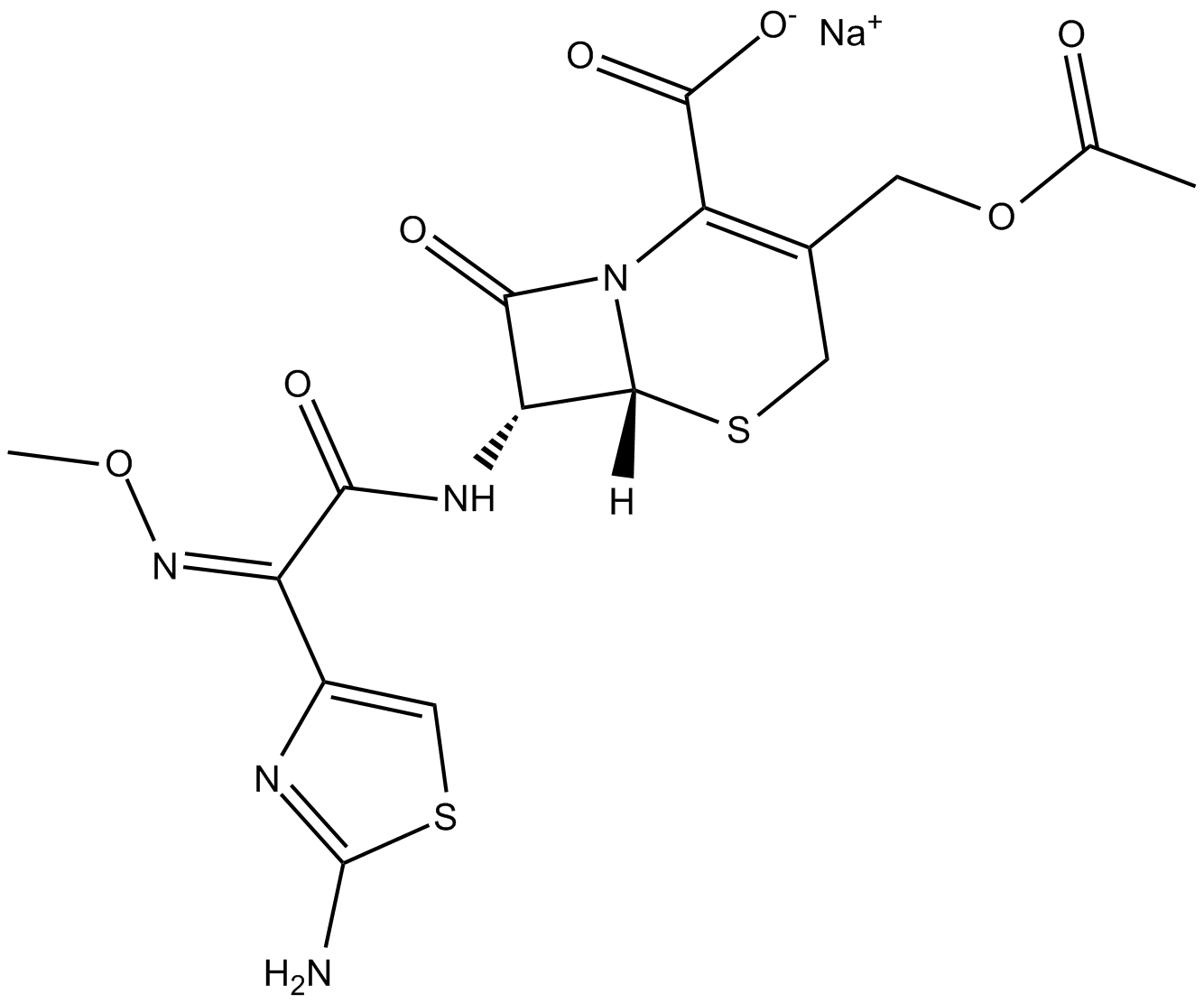
-
GC38032
Cefotetan
Cefotetan is a semisynthetic cephamycin antibiotic that exerts its bactericidal effects by inhibition of cell-wall synthesis.
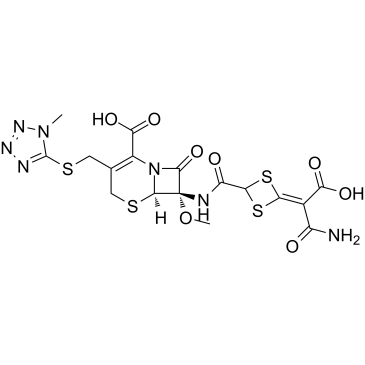
-
GC43223
Cefotetan (sodium salt)
Cefotetan (sodium salt) is a semisynthetic cephamycin antibiotic that exerts its bactericidal effects by inhibition of cell-wall synthesis.
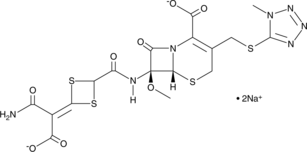
-
GC32212
Cefotiam hydrochloride (SCE-963 hydrochloride)
Cefotiam (SCE-963) hydrochloride is a parenteral cephalosporin antibiotic.
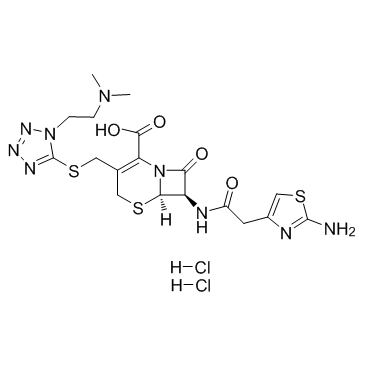
-
GC60686
Cefoxitin
Cefoxitin, a β-lactam antibiotic, is a broad-spectrum, second-generation cephalosporin.
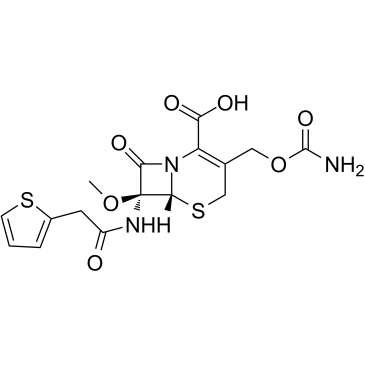
-
GC16446
Cefoxitin (sodium salt)
Cefoxitin (sodium salt) (MK-306) is a cephamycin antibiotic, often grouped with the second generation cephalosporins, acts by interfering with cell wall synthesis, its activity spectrum includes a broad range of gram-negative and gram-positive bacteria.
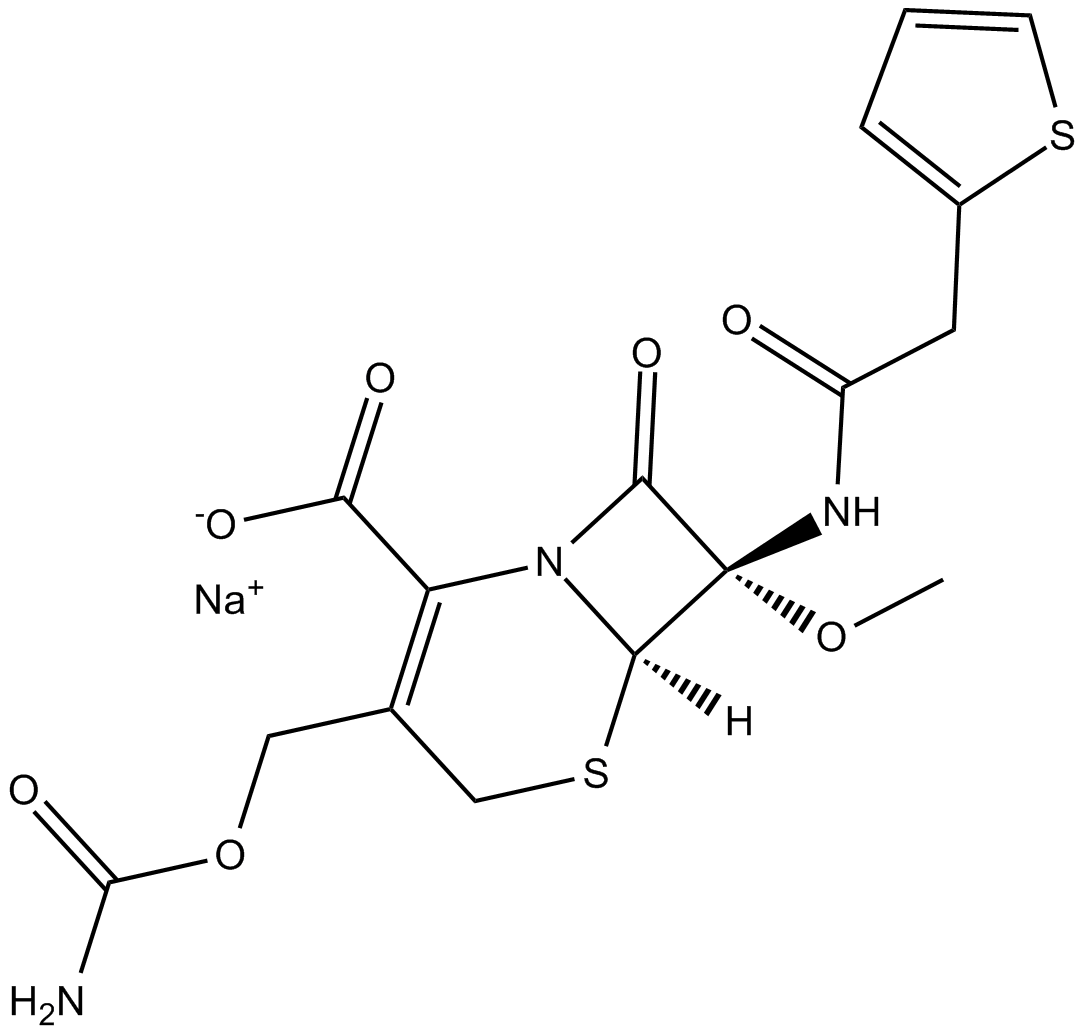
-
GC32236
Cefozopran (SCE-2787)
Cefozopran (SCE-2787) (SCE-2787) is a semi-synthetic, parenteral, fourth-generation cephalosporin.
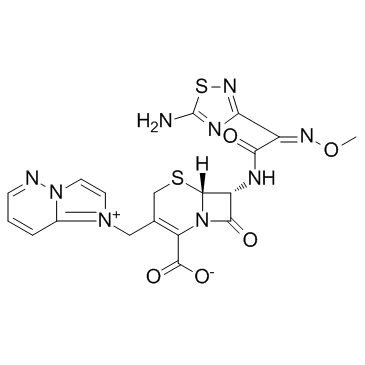
-
GC32139
Cefozopran hydrochloride (SCE-2787 hydrochloride)
Cefozopran (SCE-2787) hydrochloride is a semi-synthetic, parenteral, fourth-generation cephalosporin.
